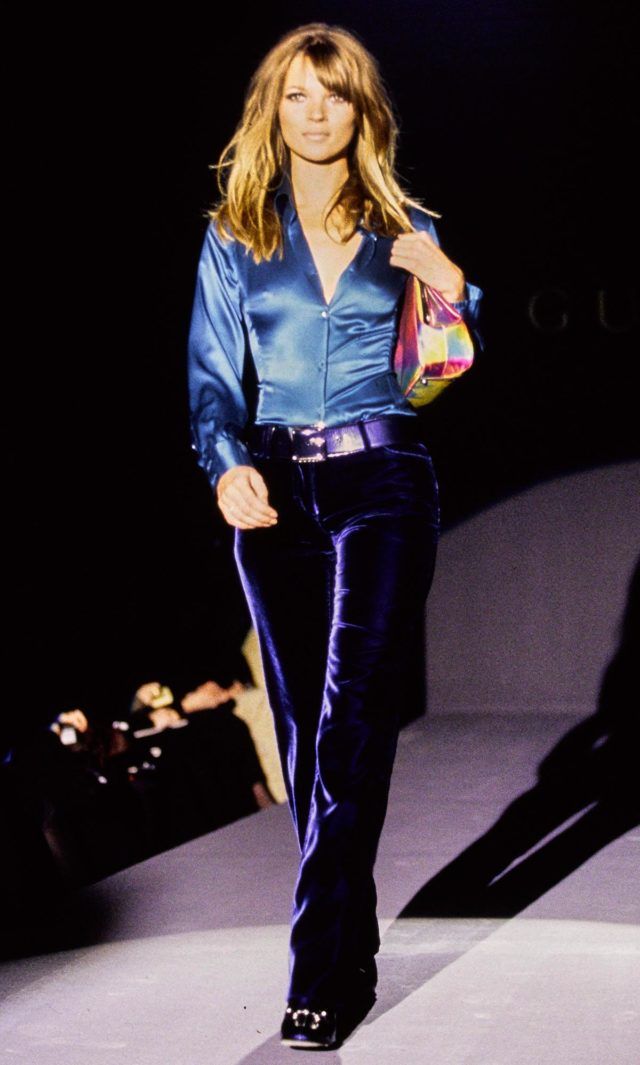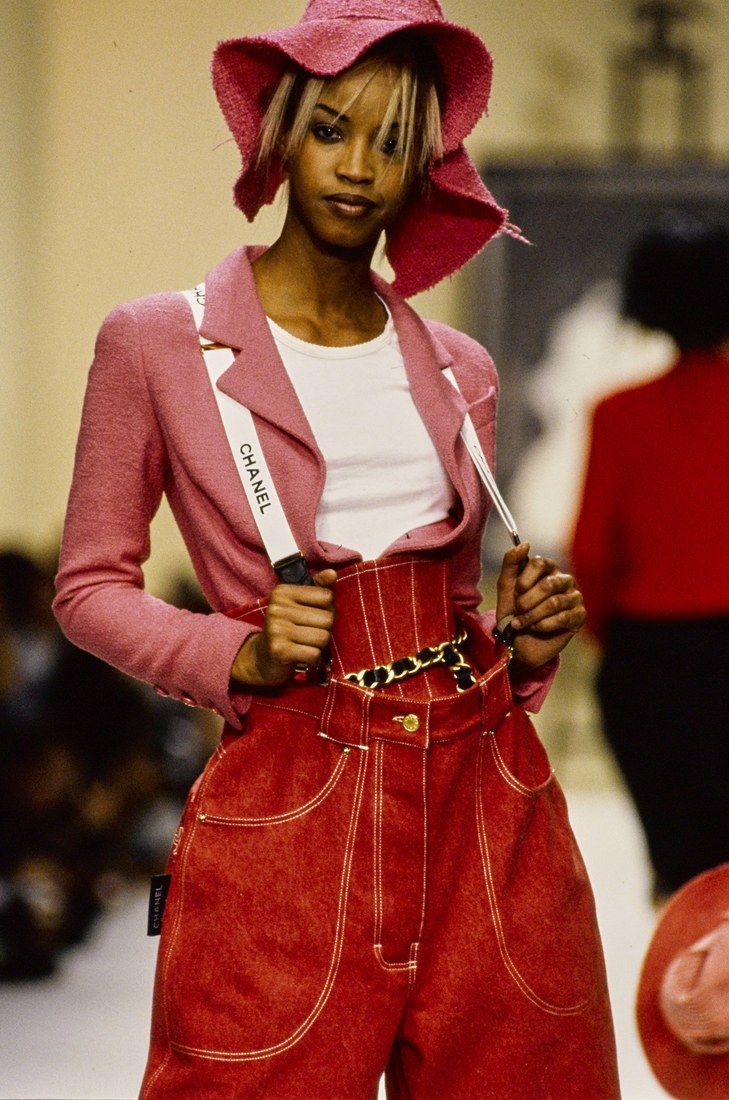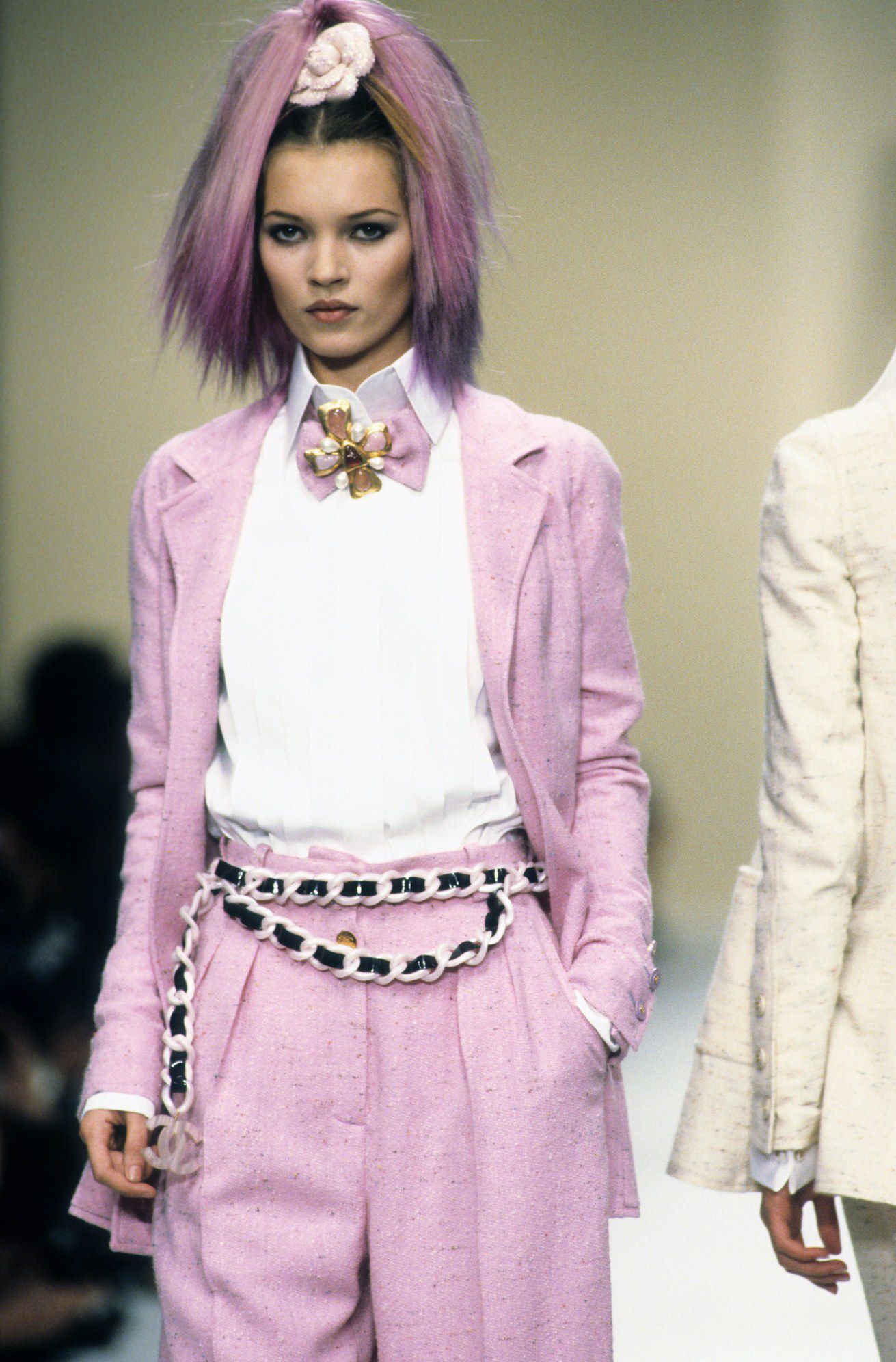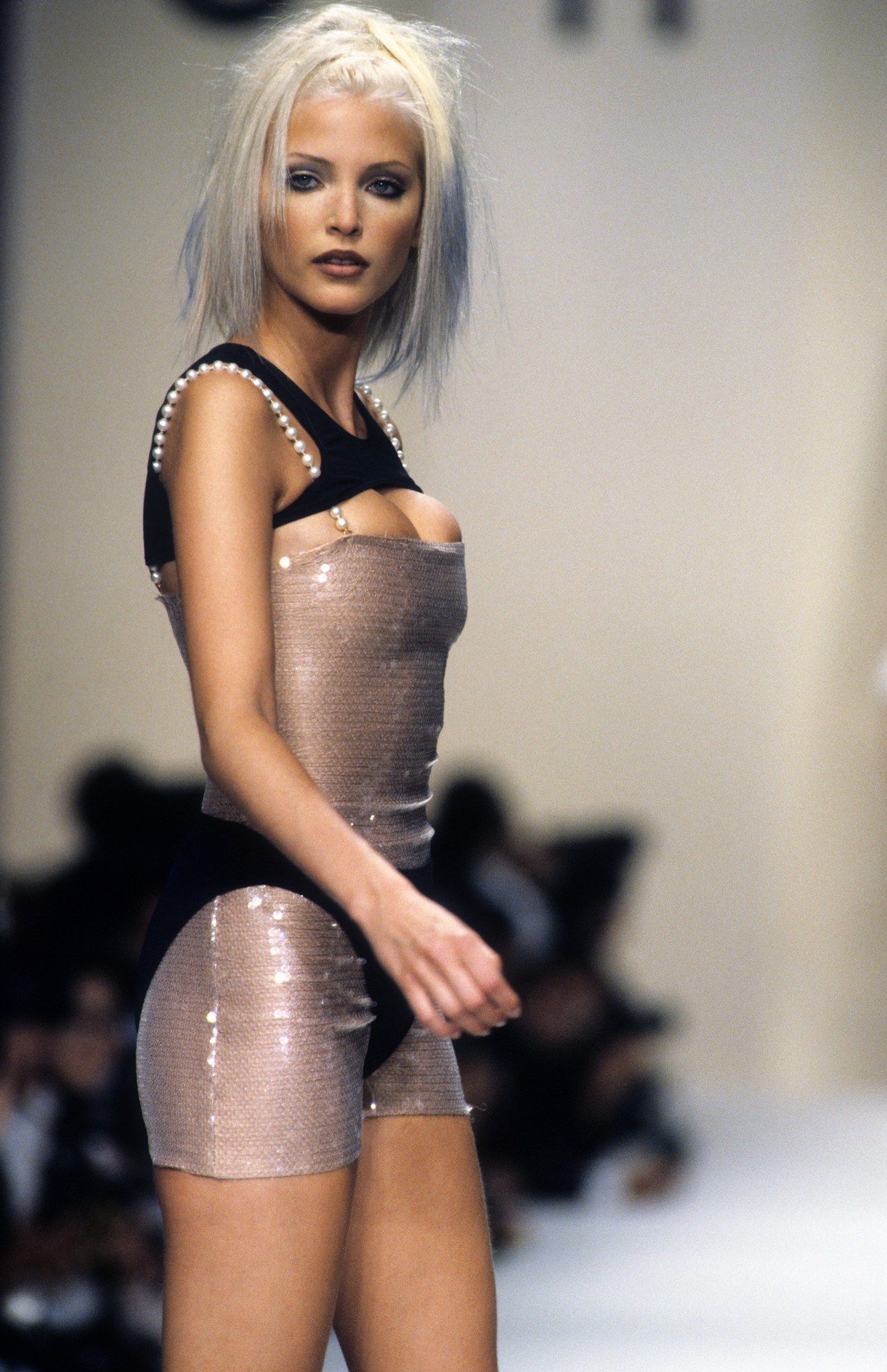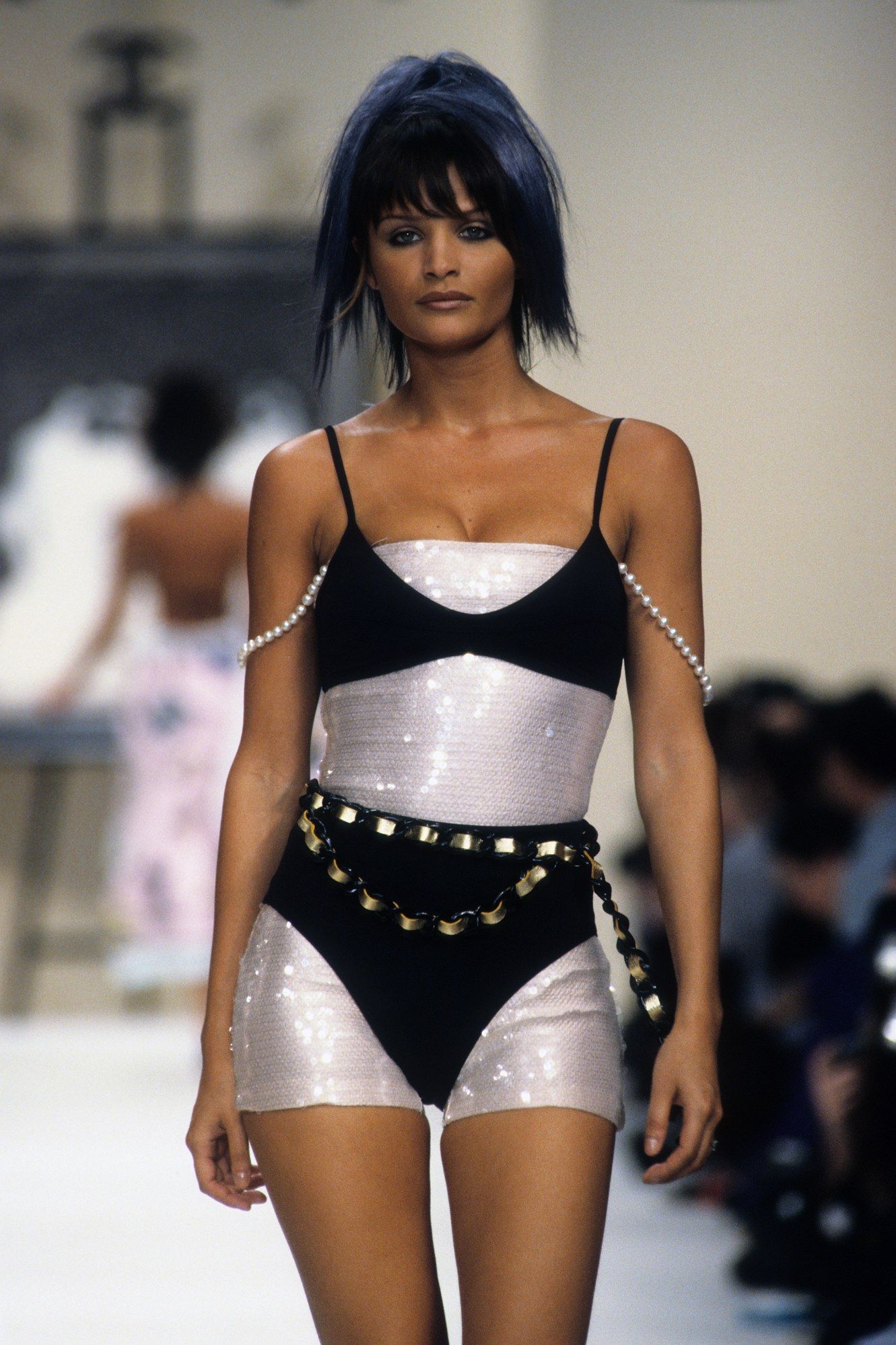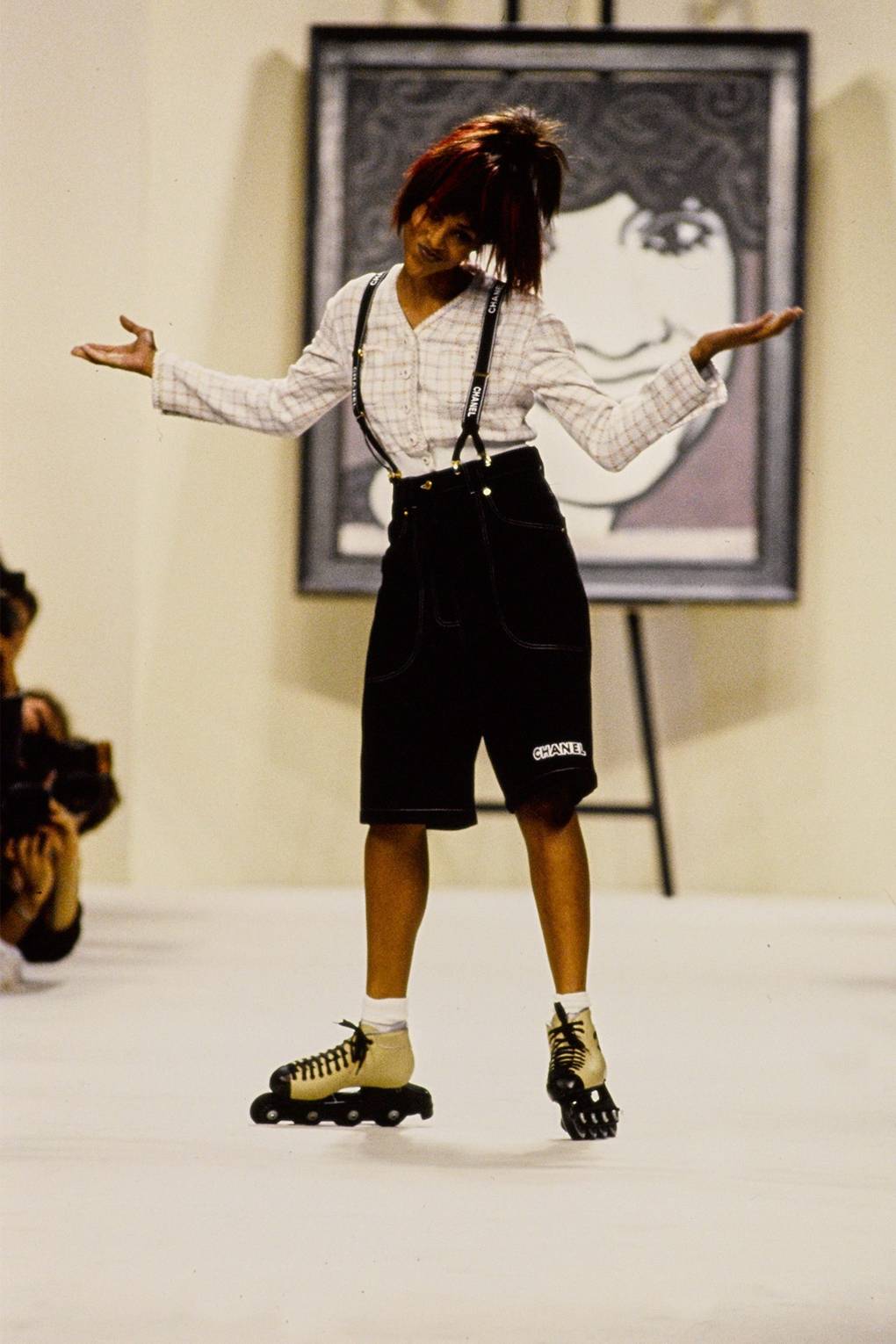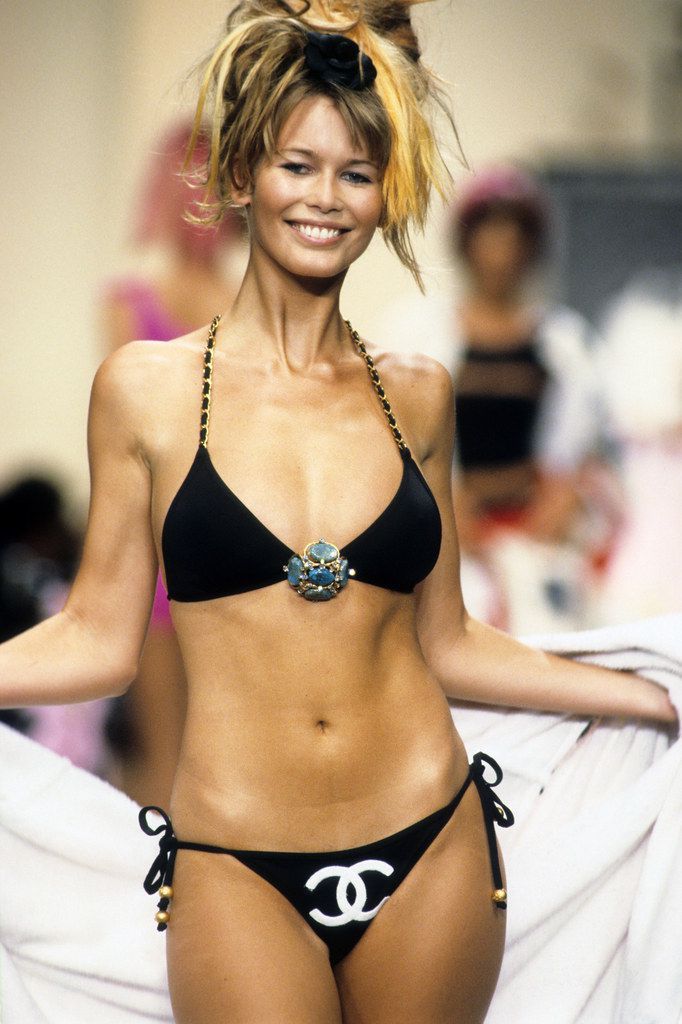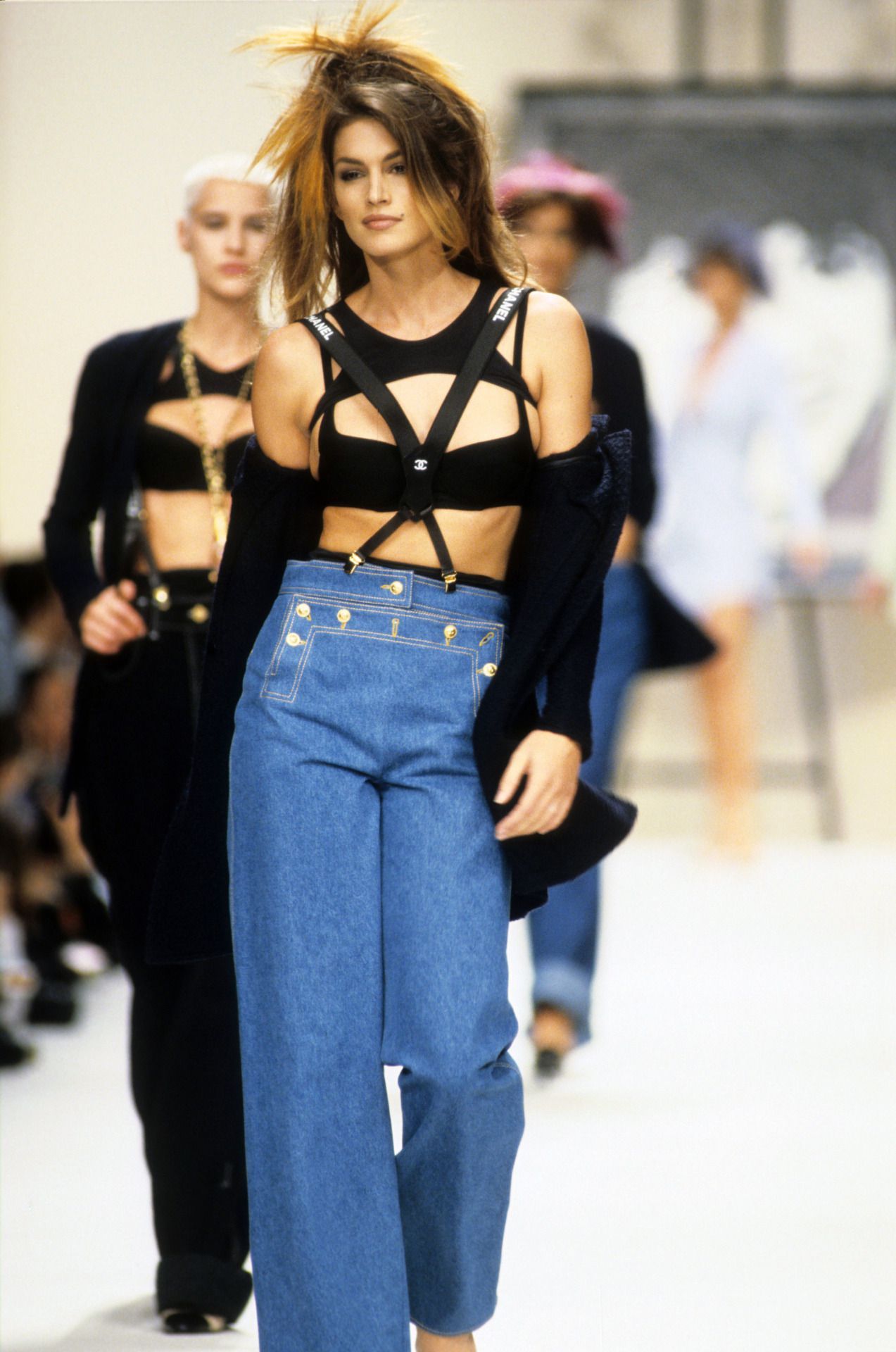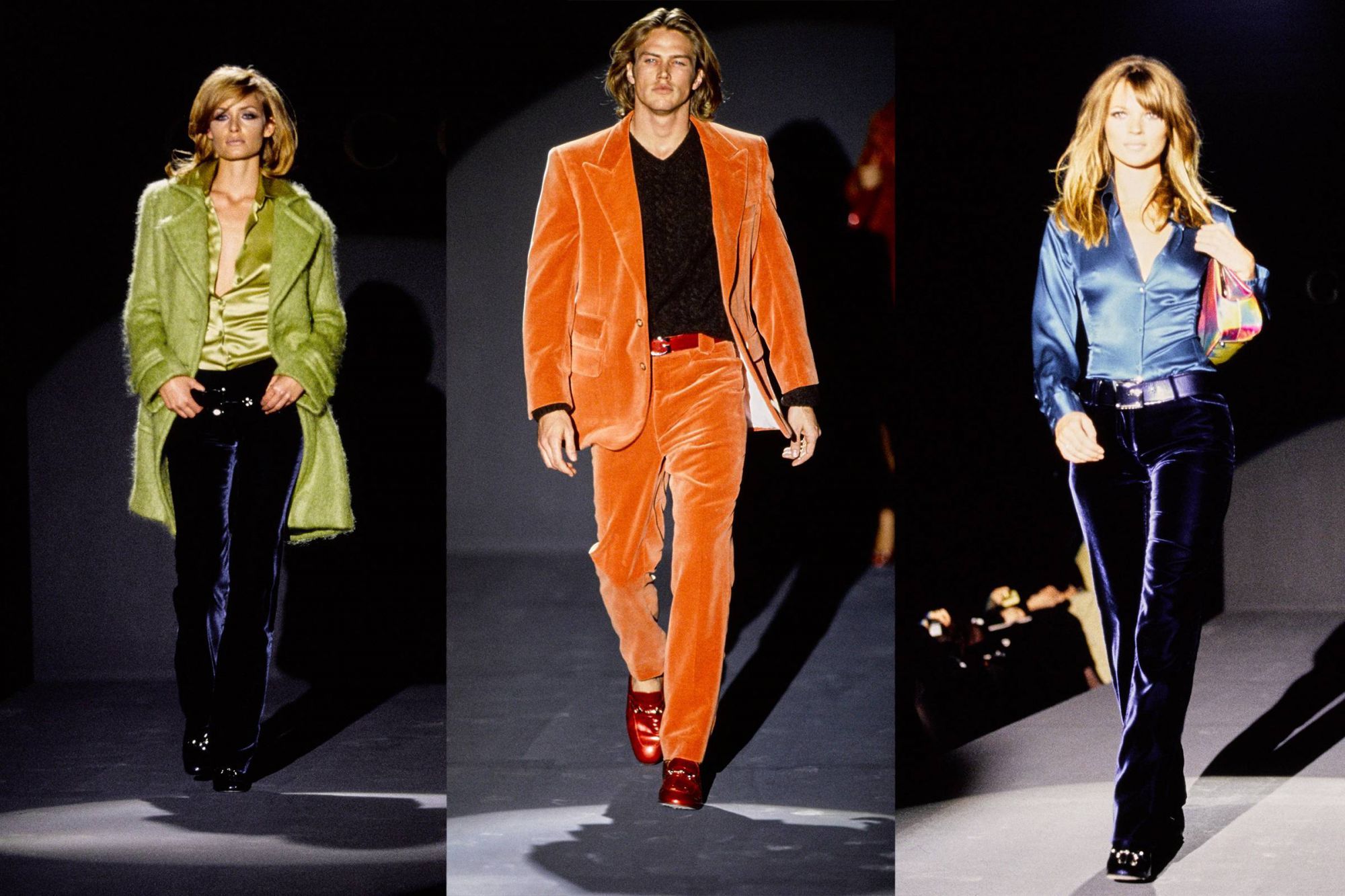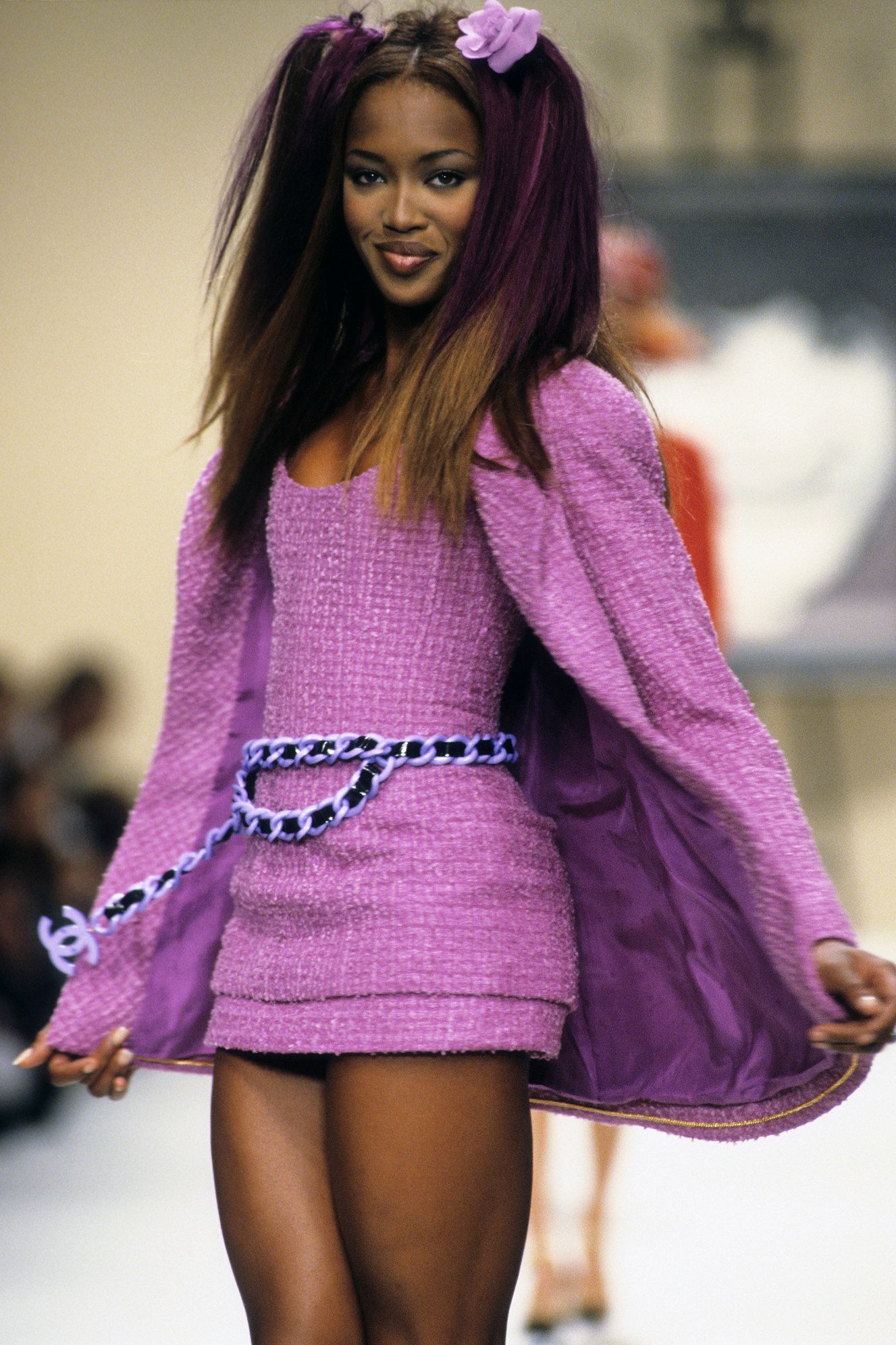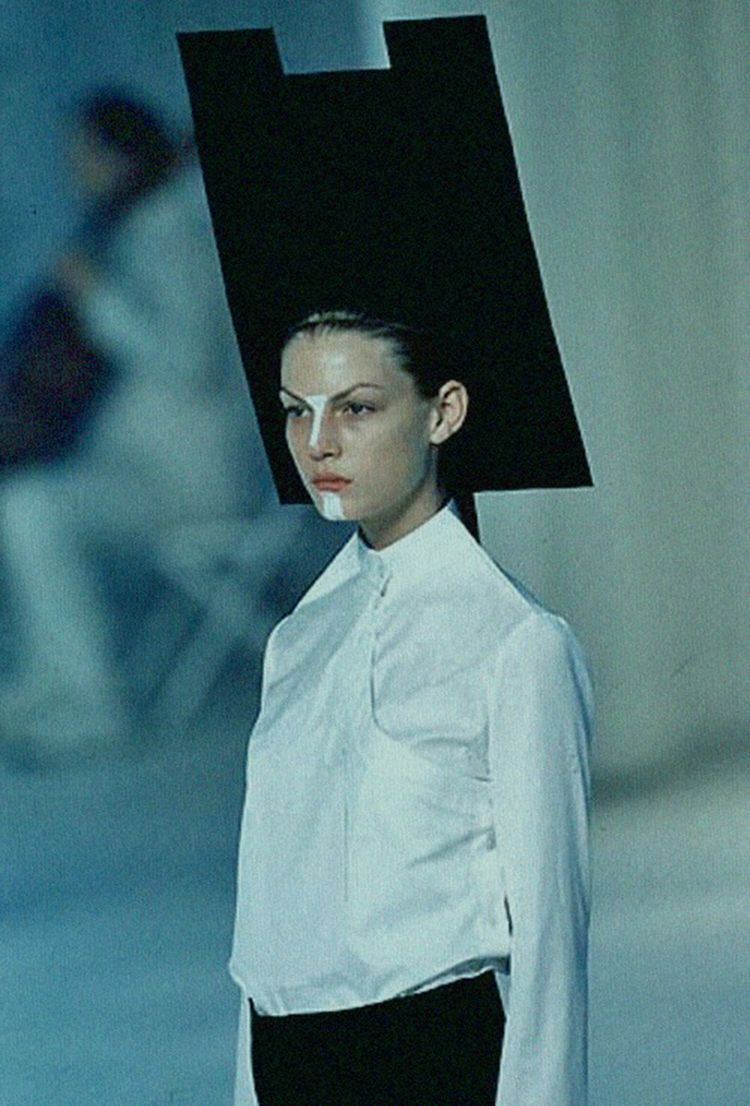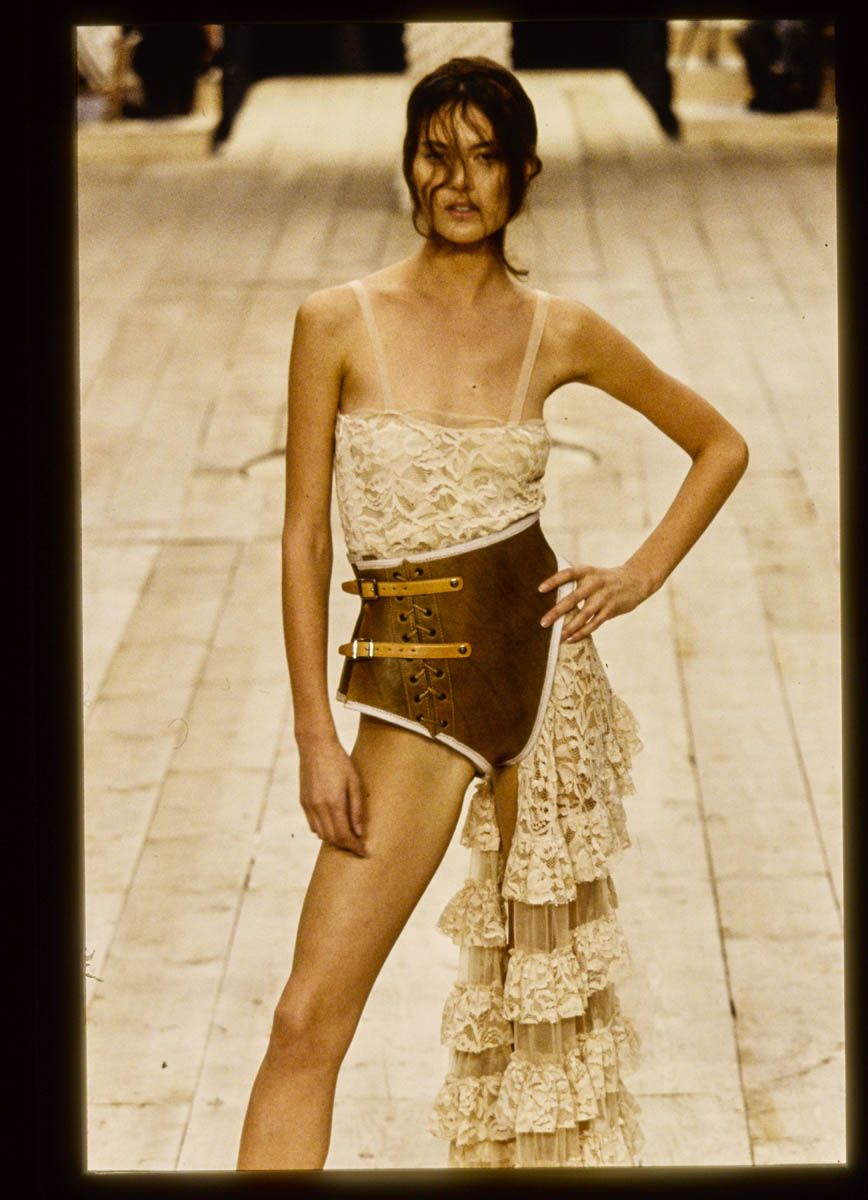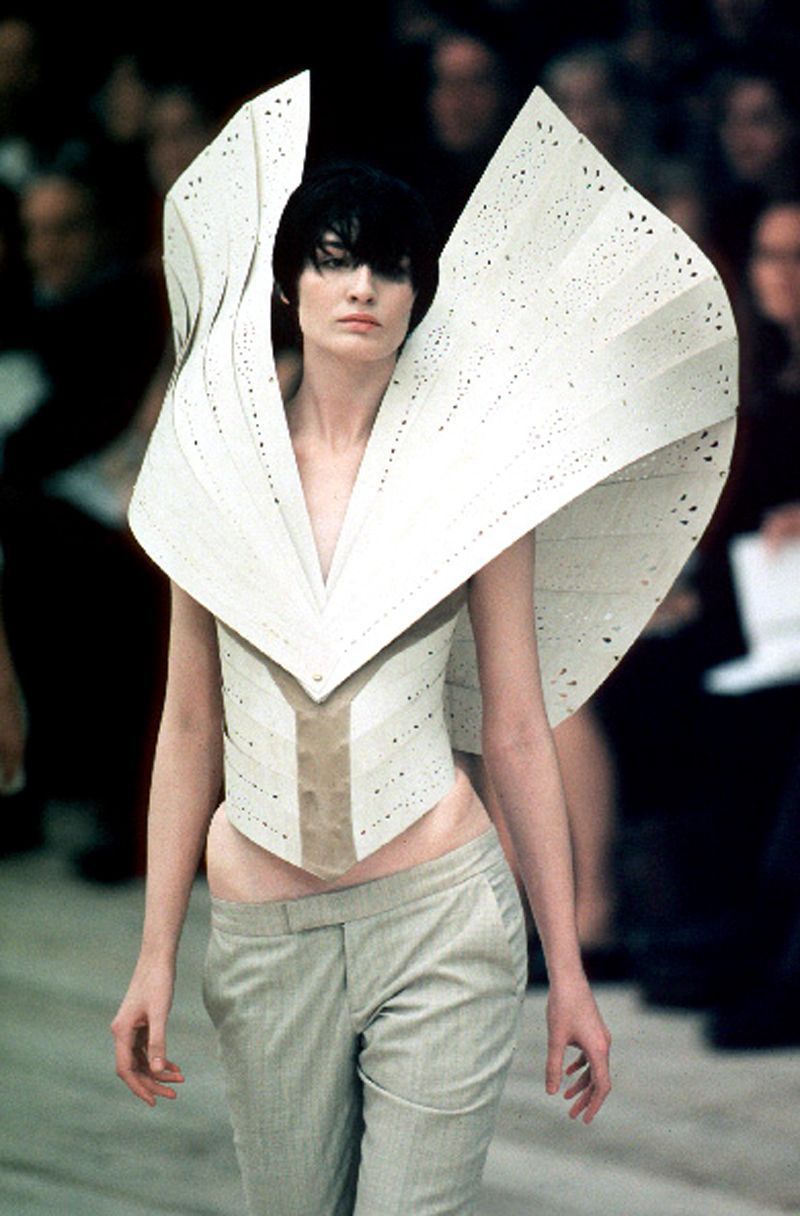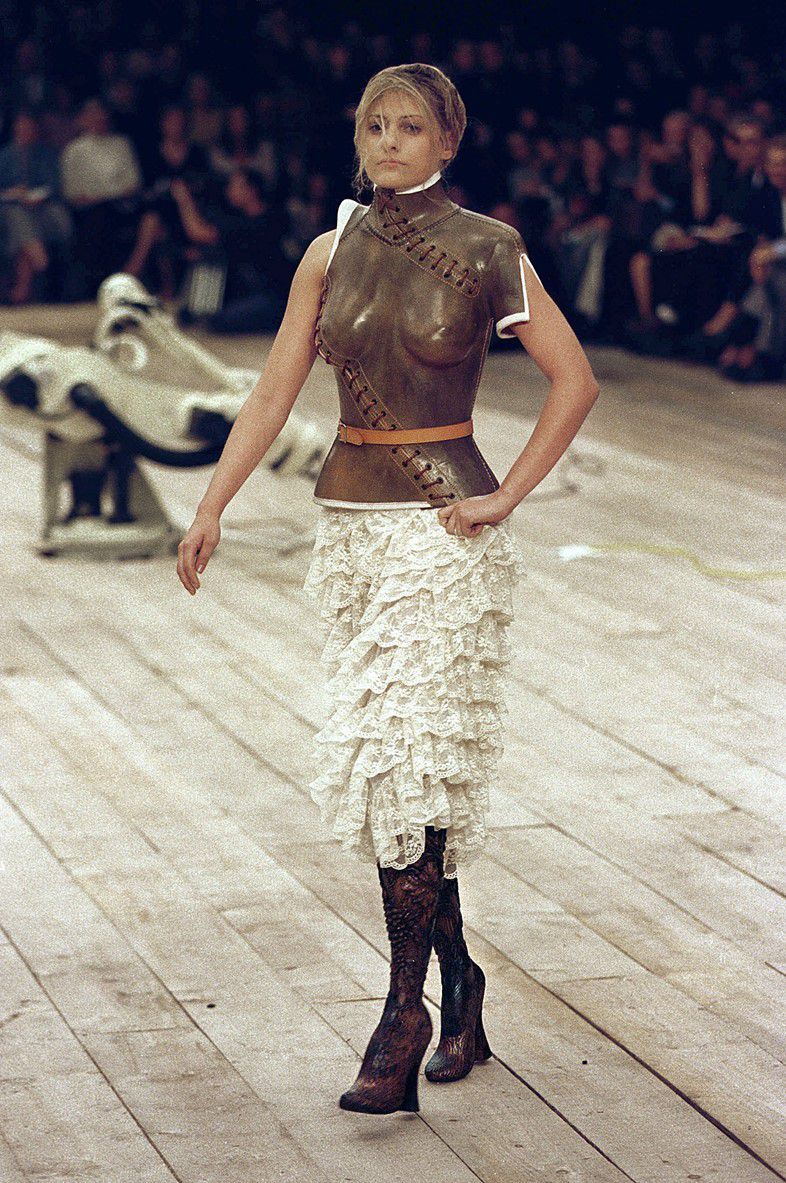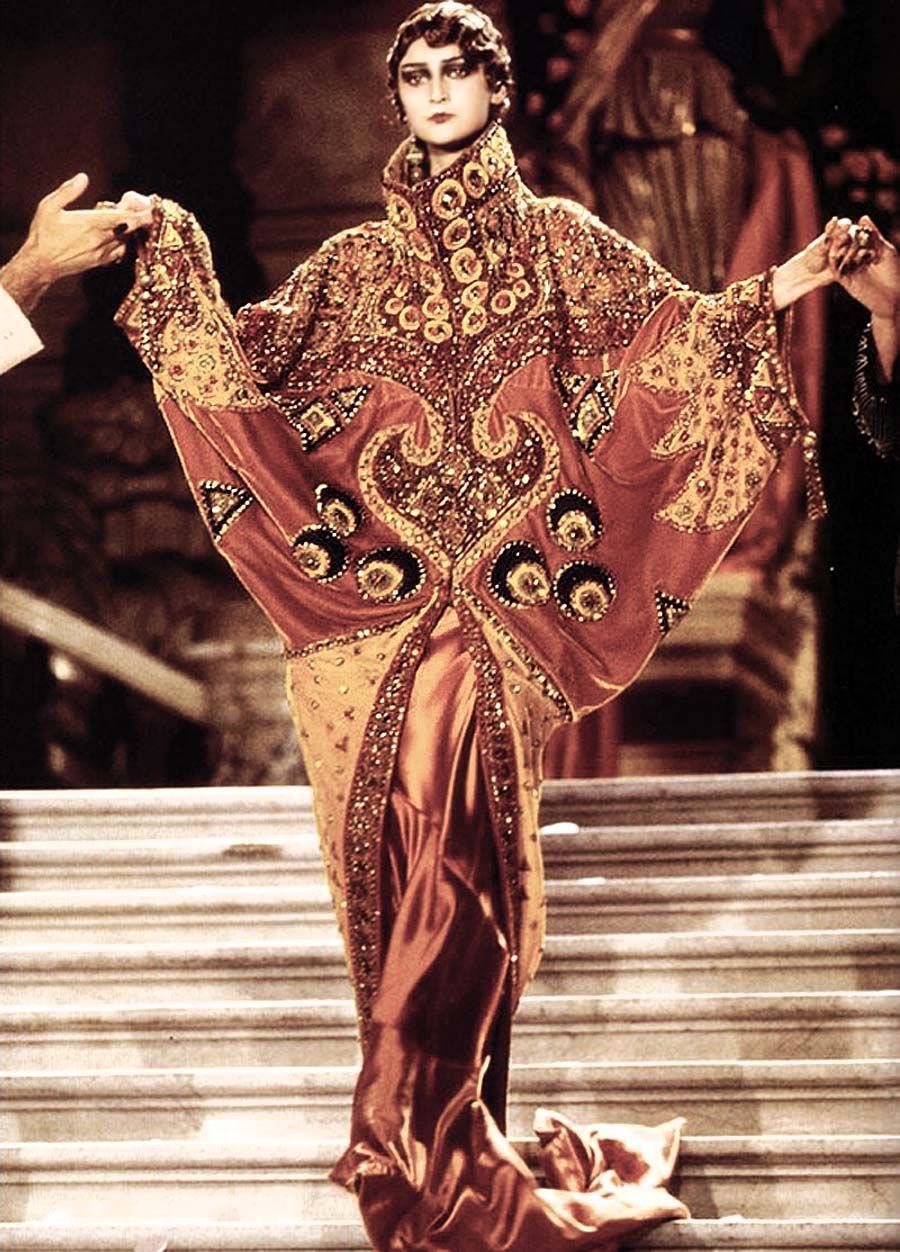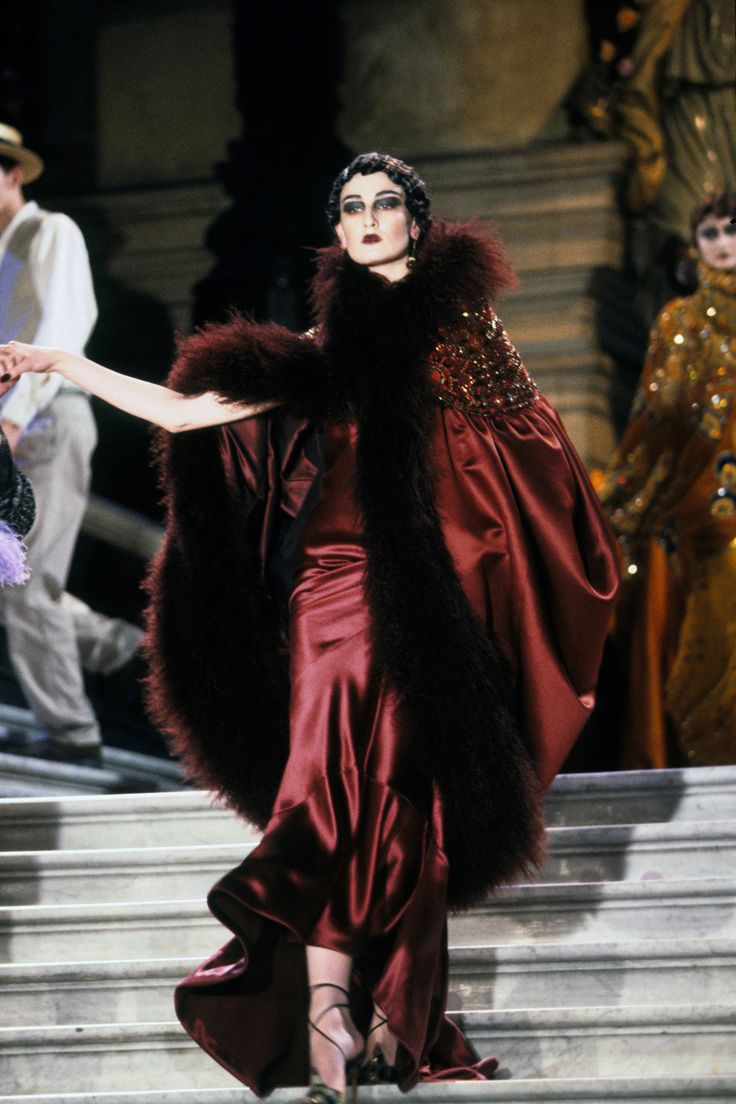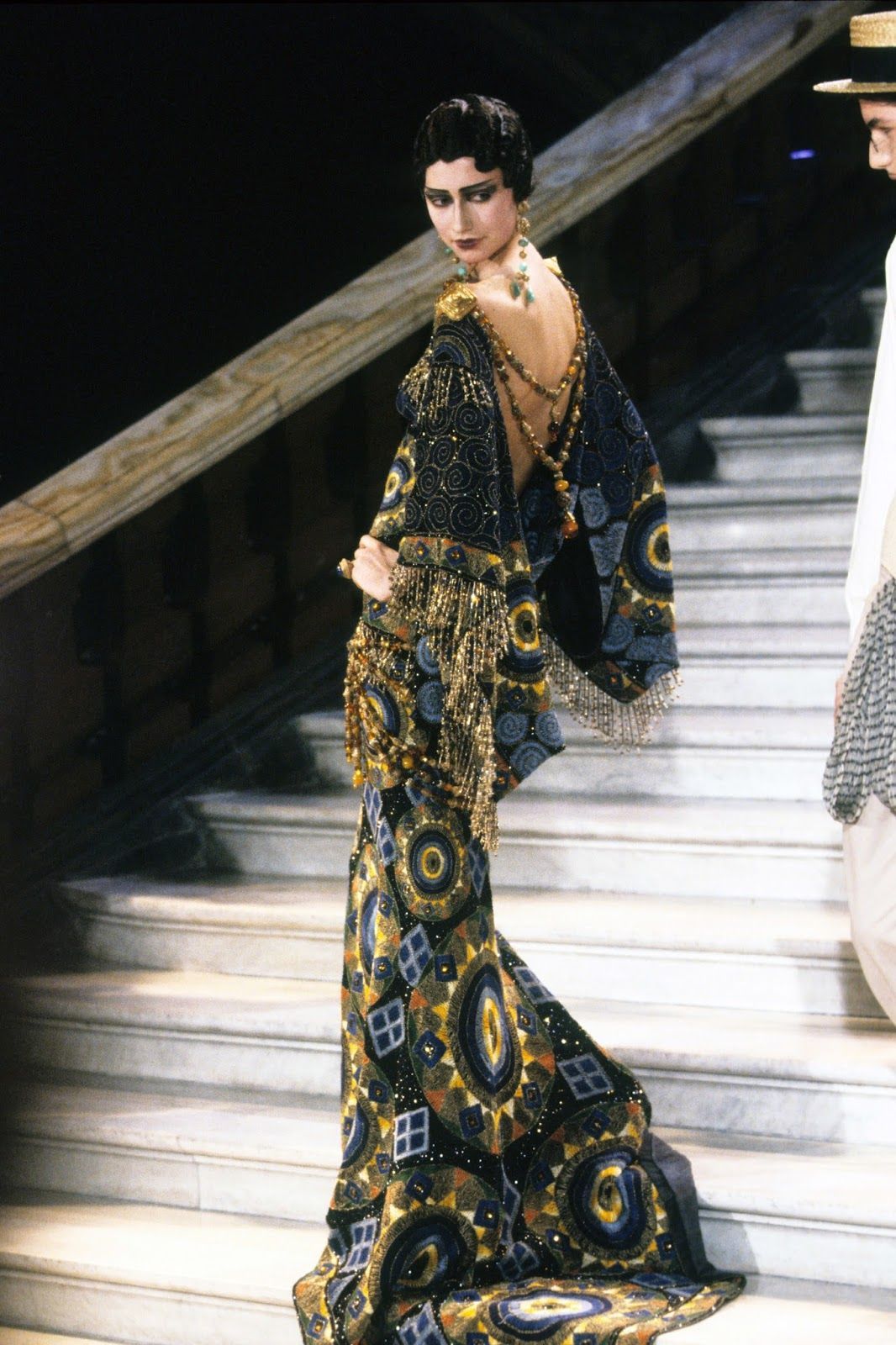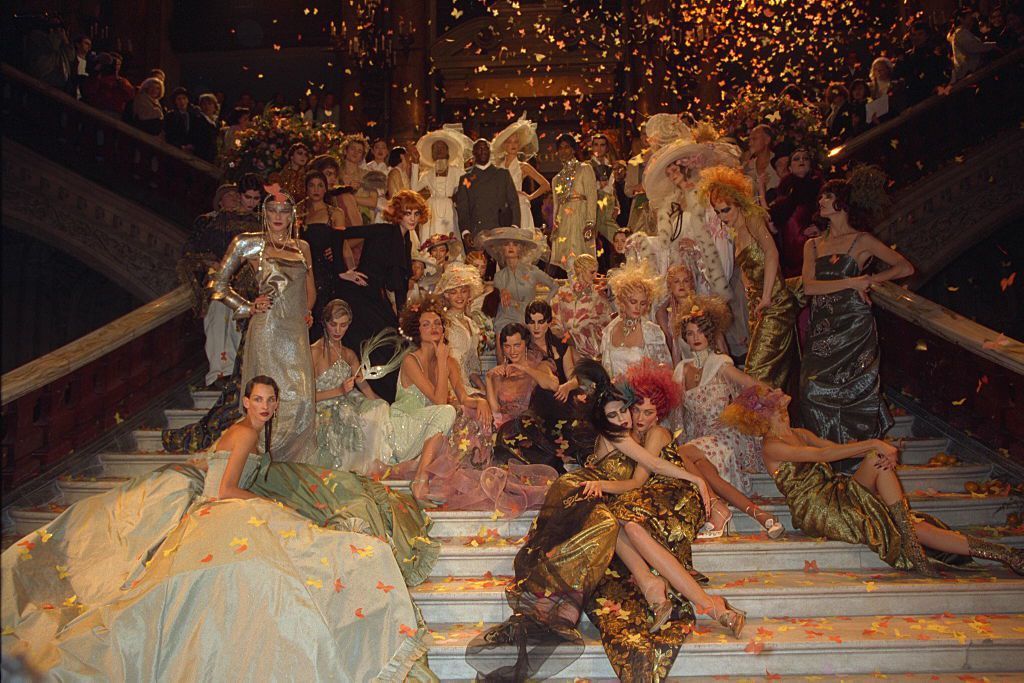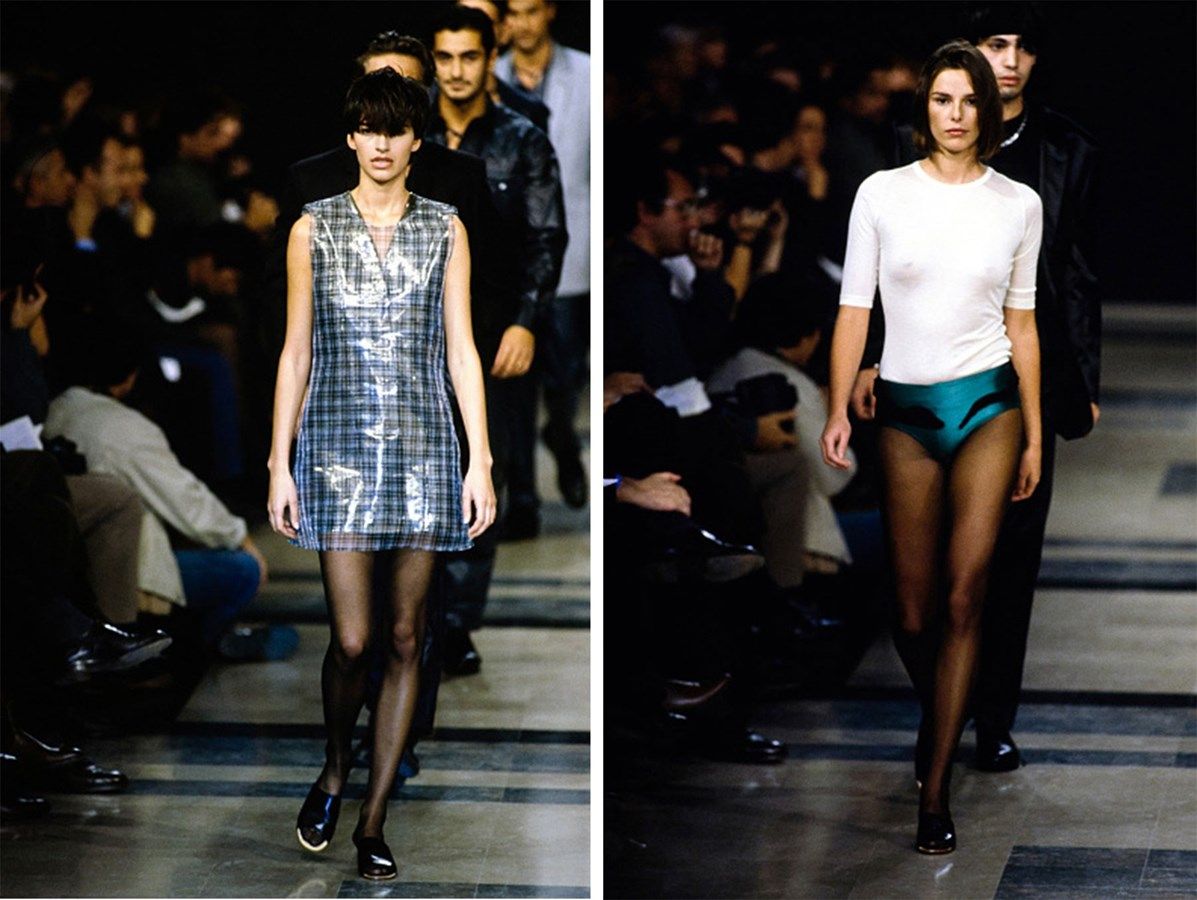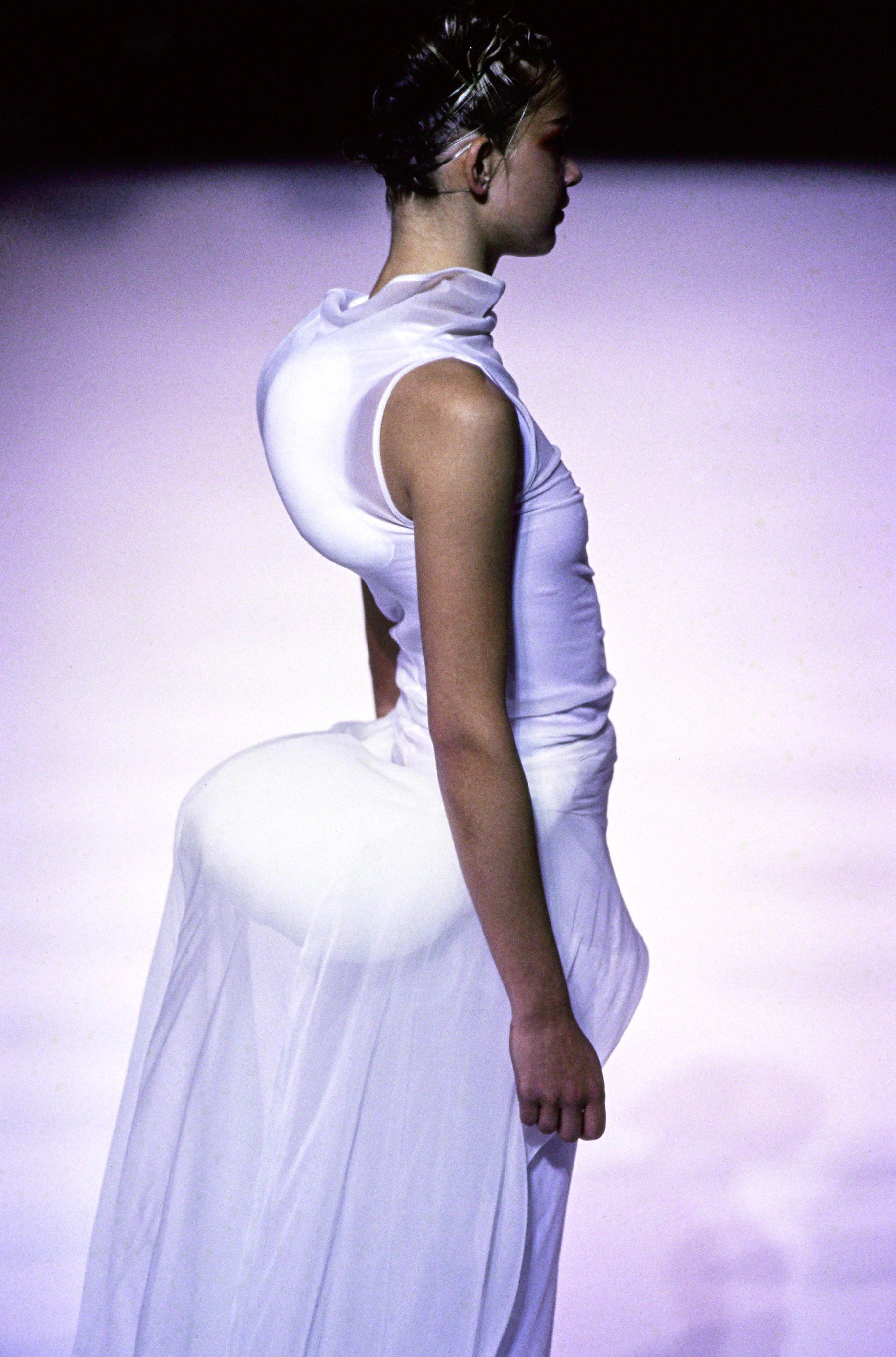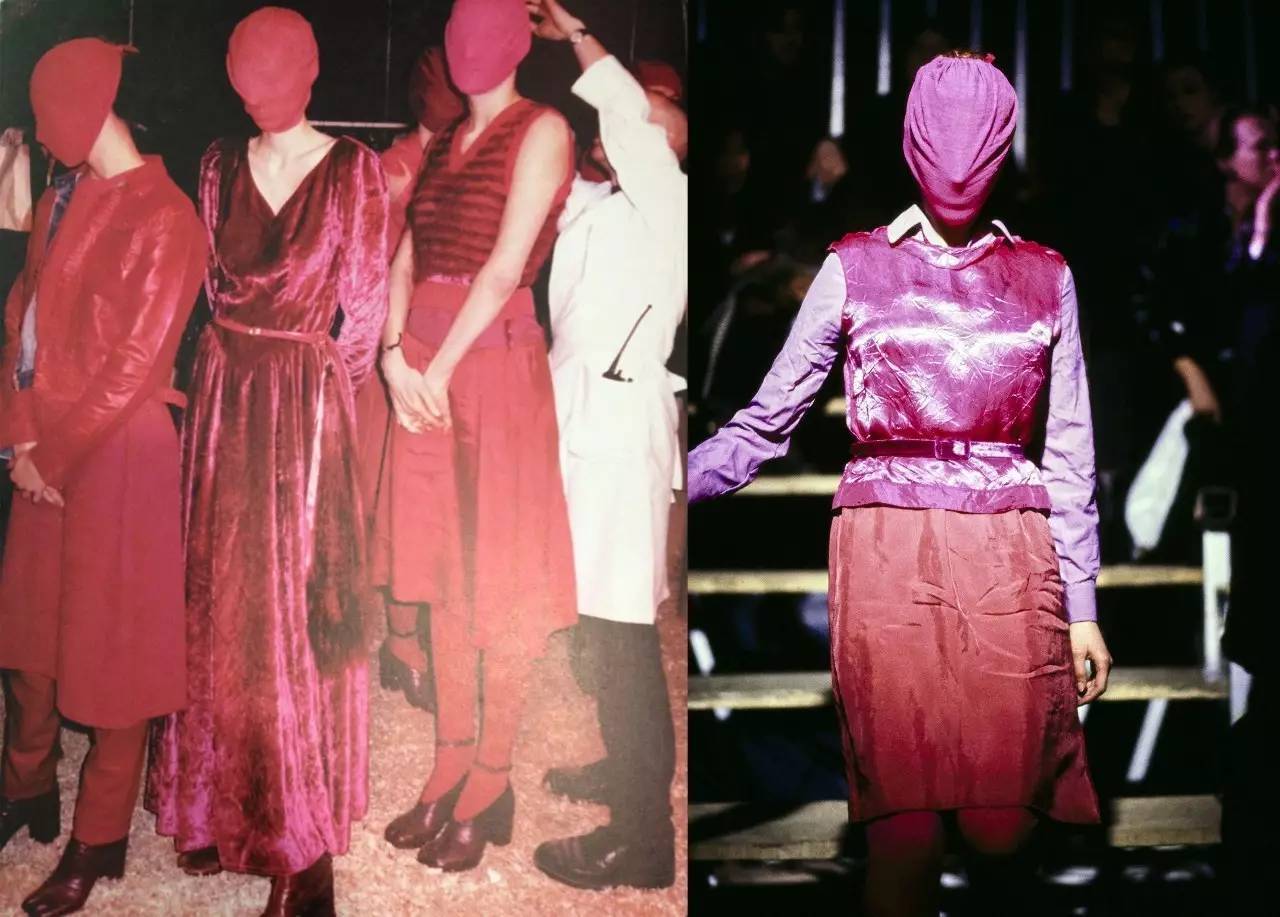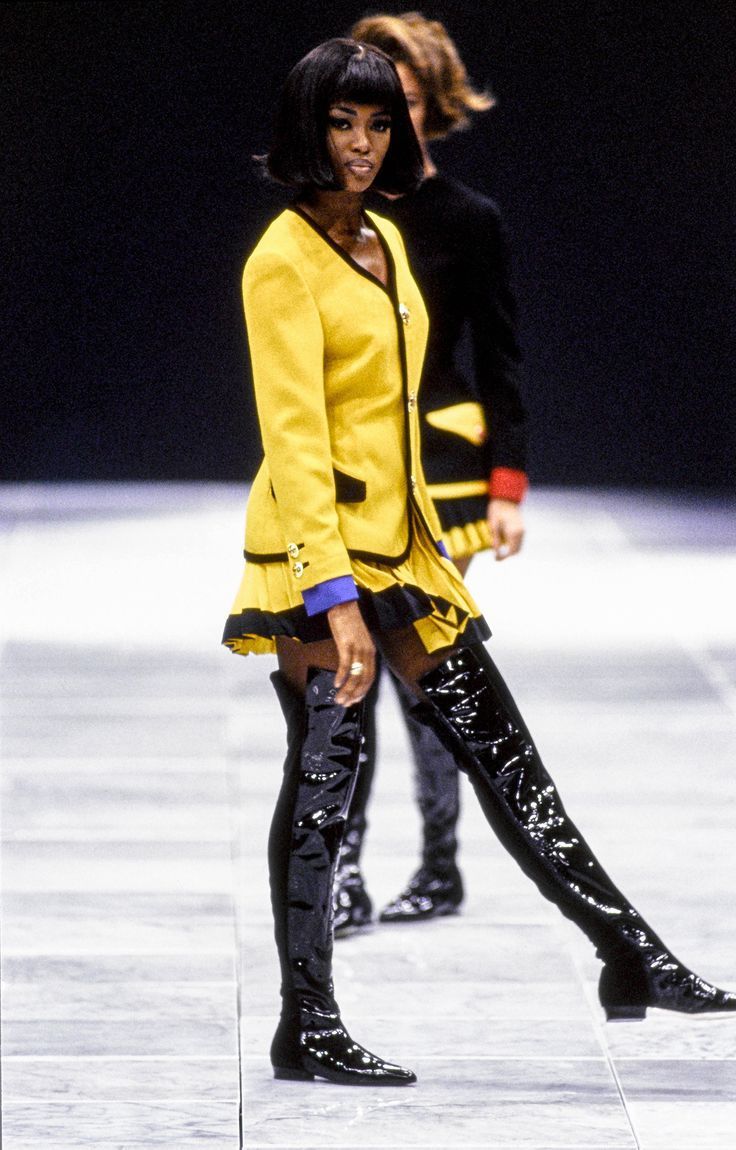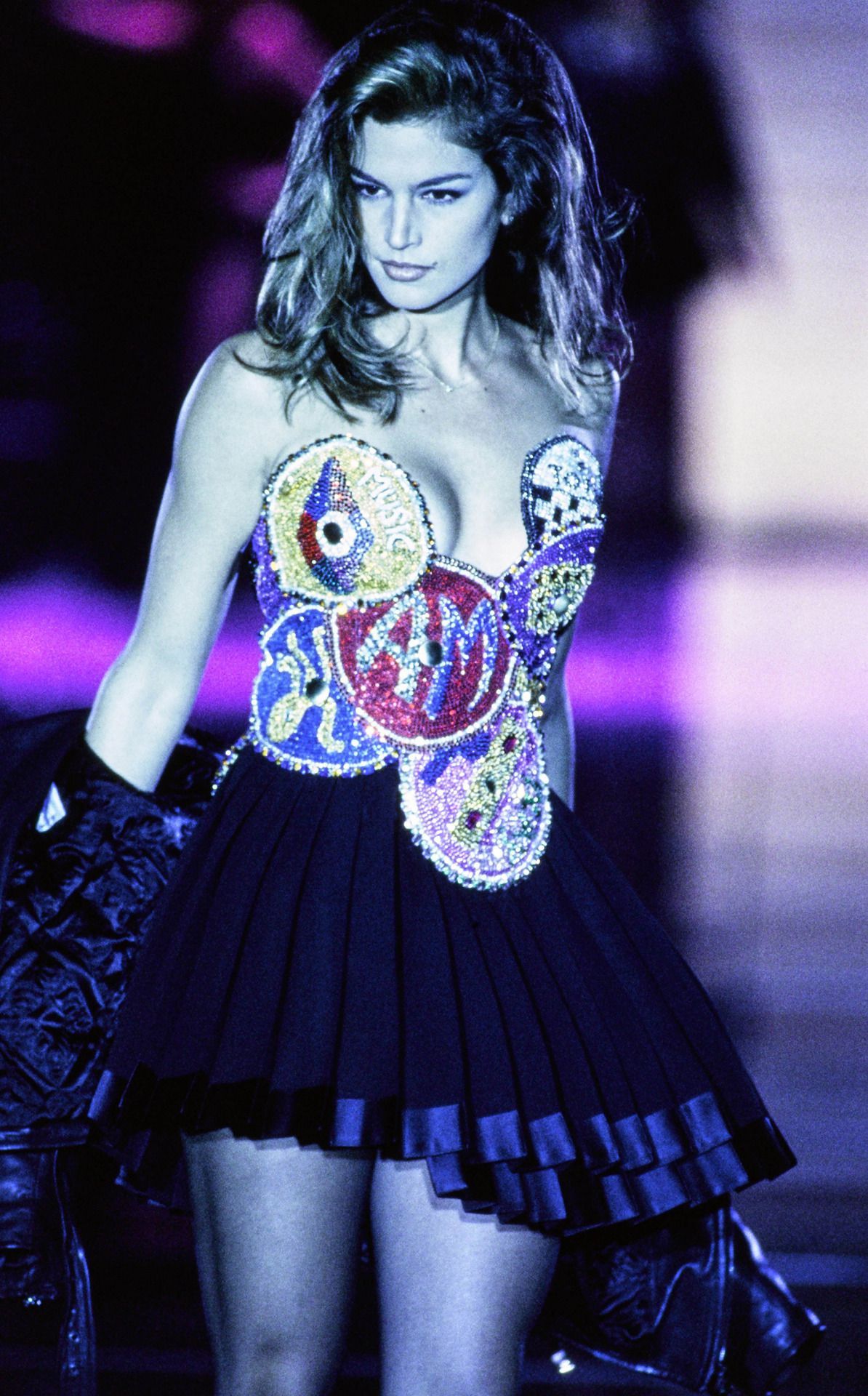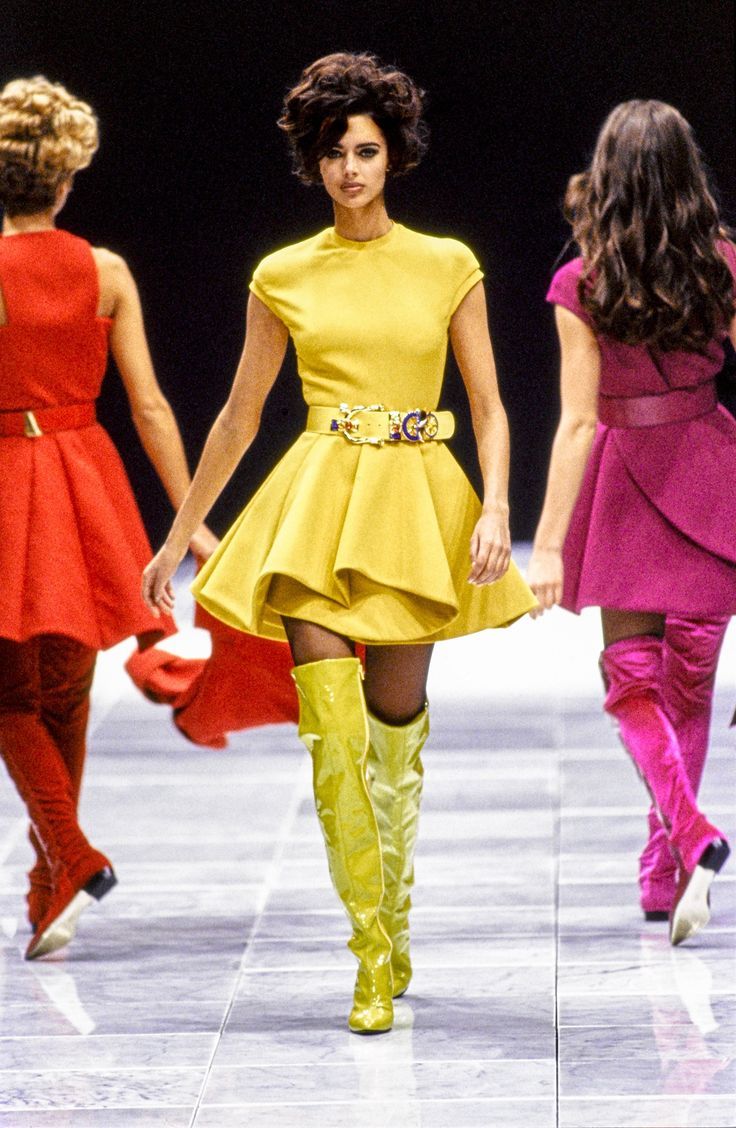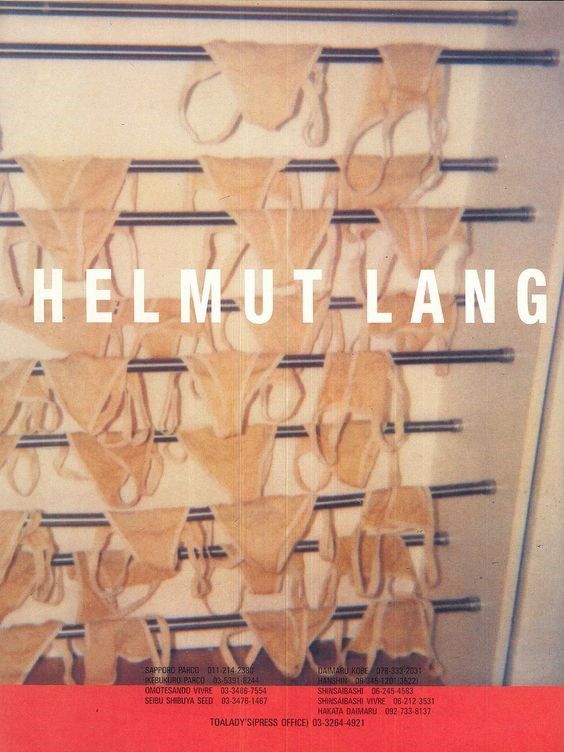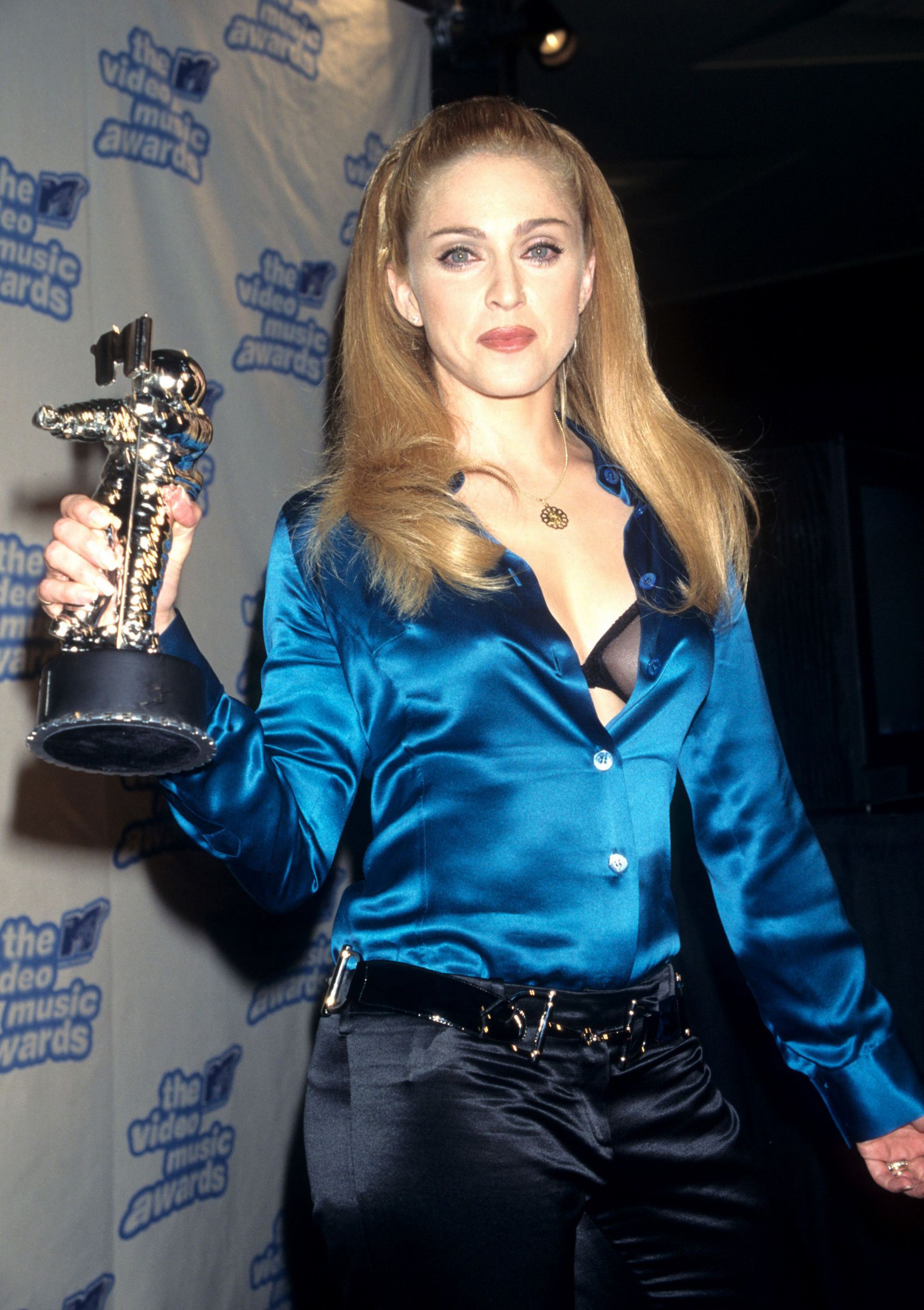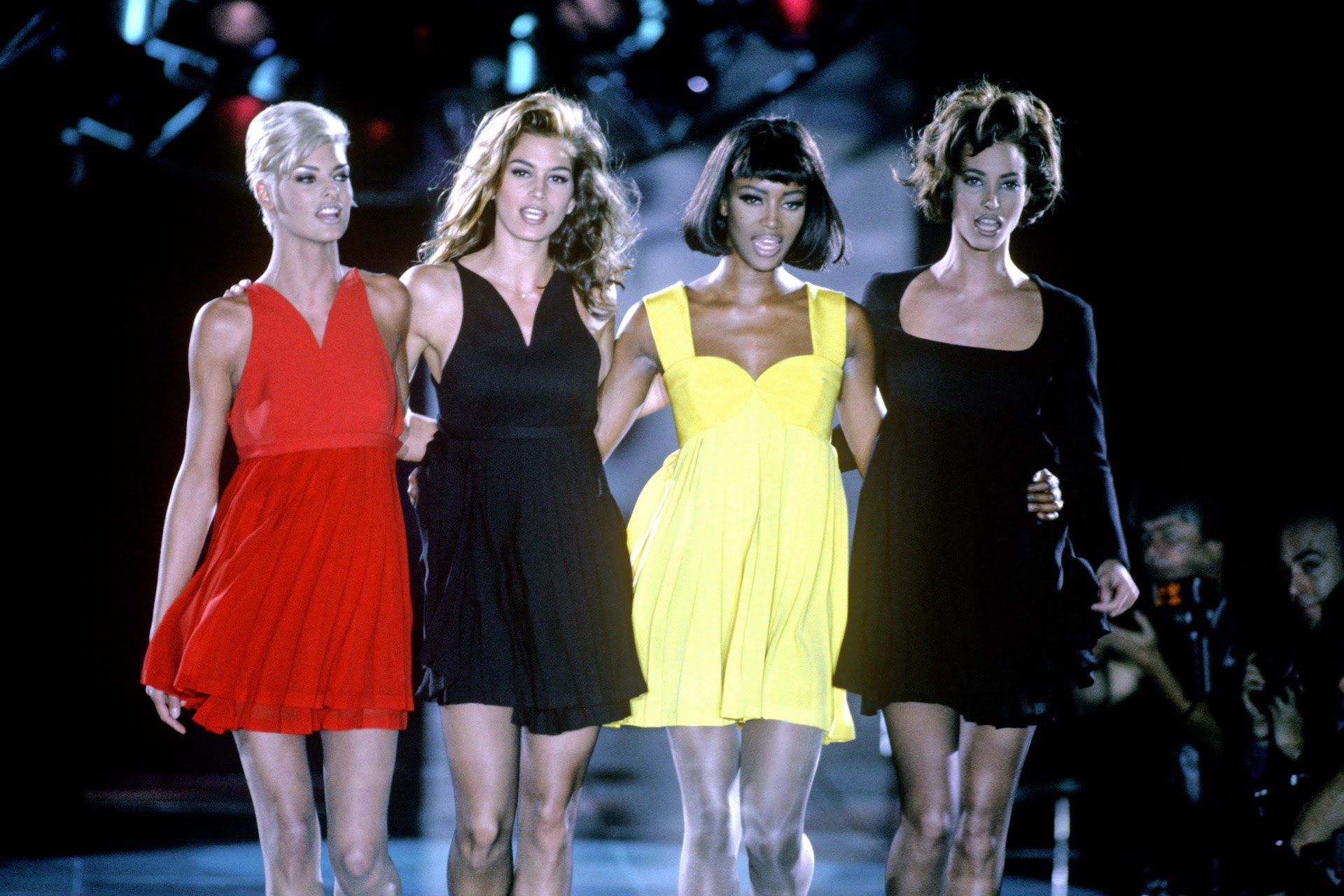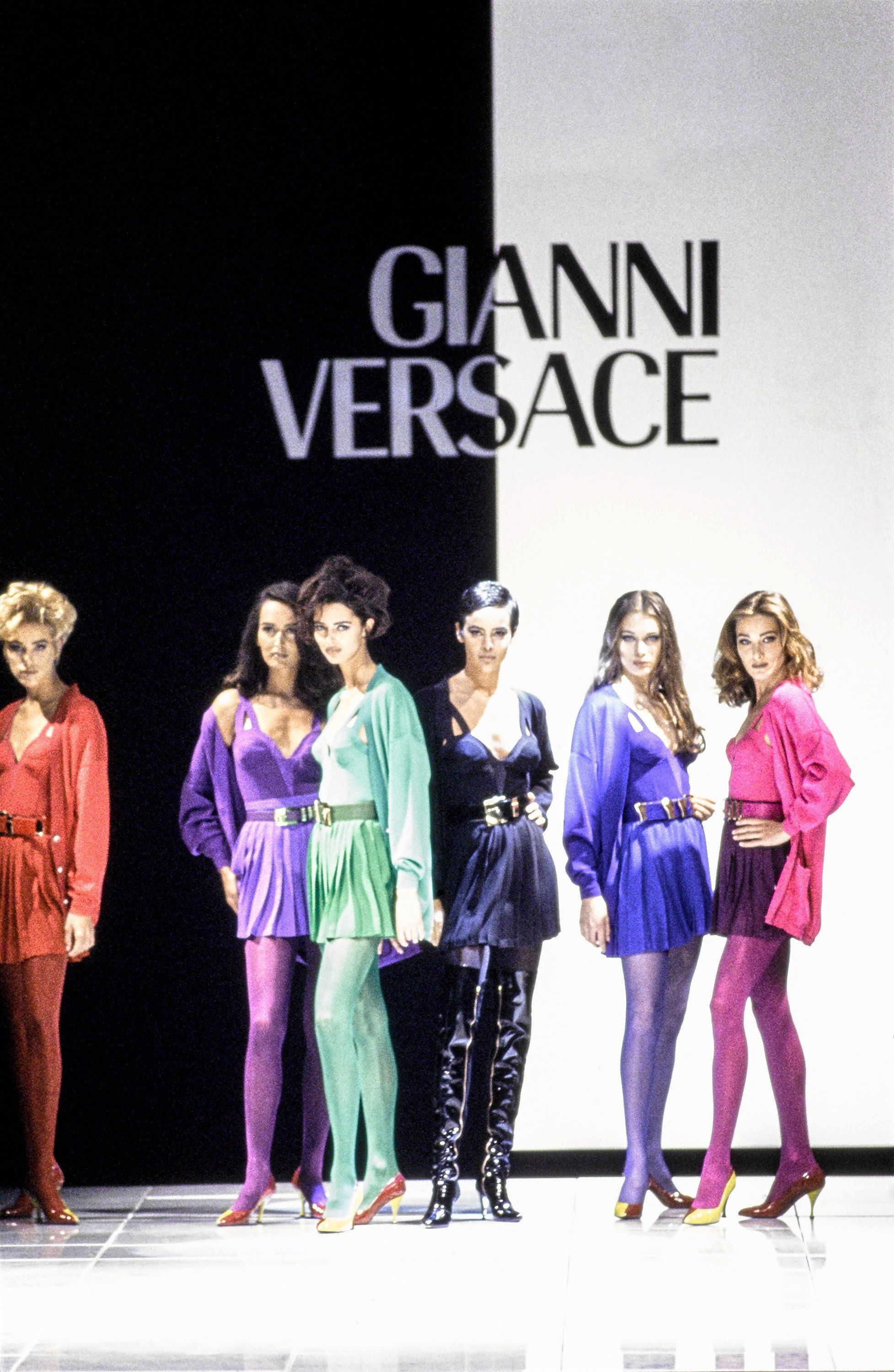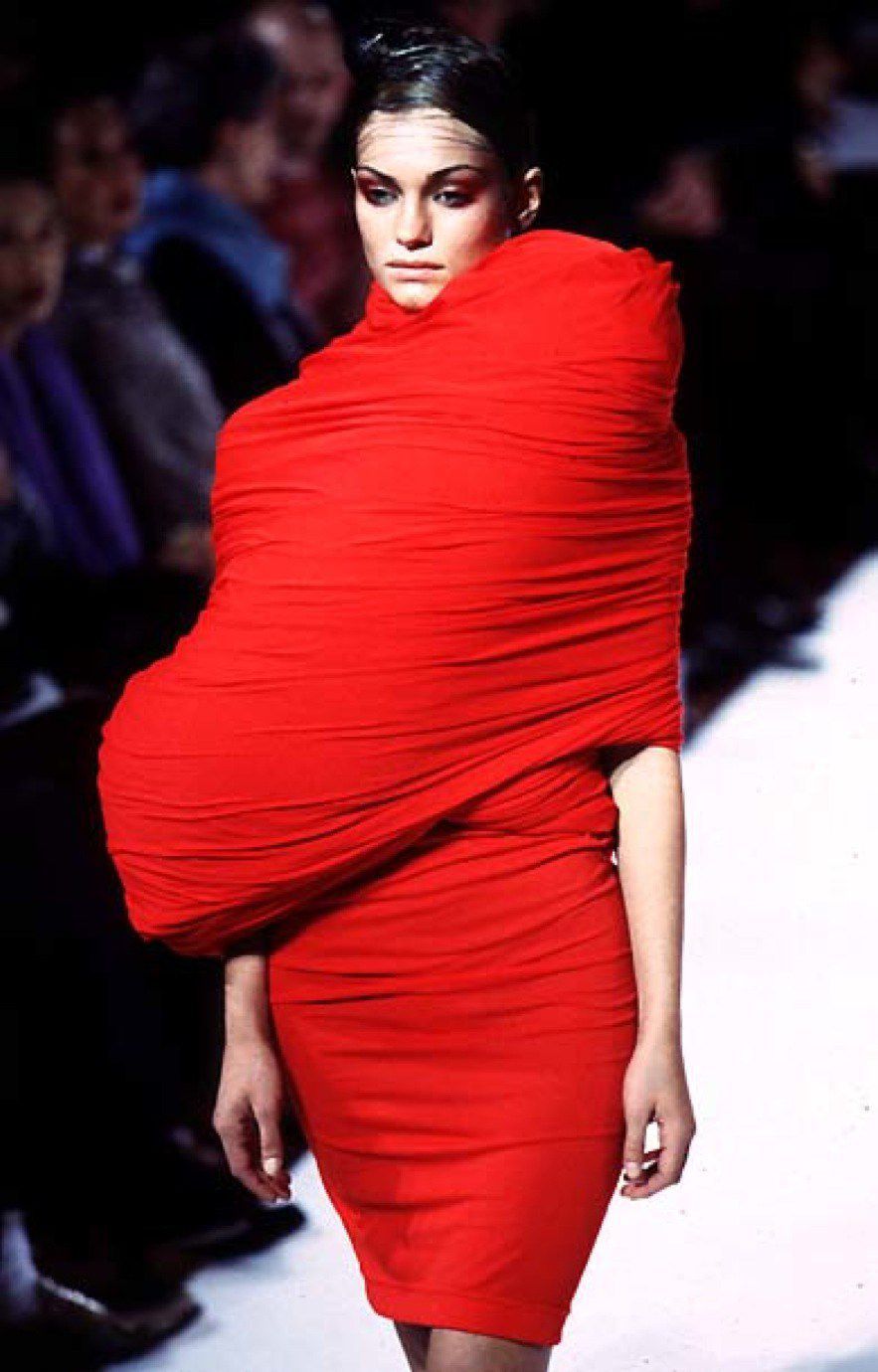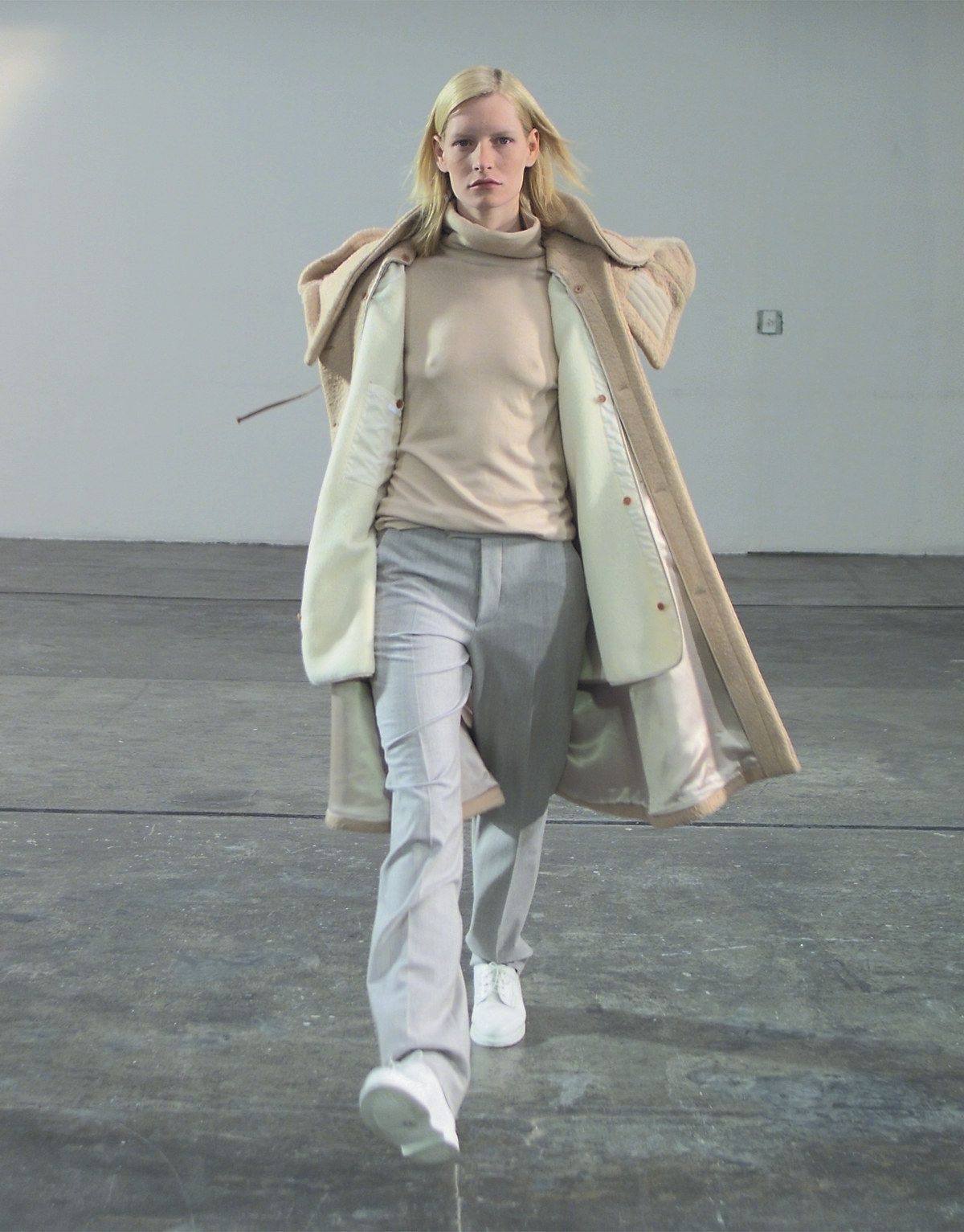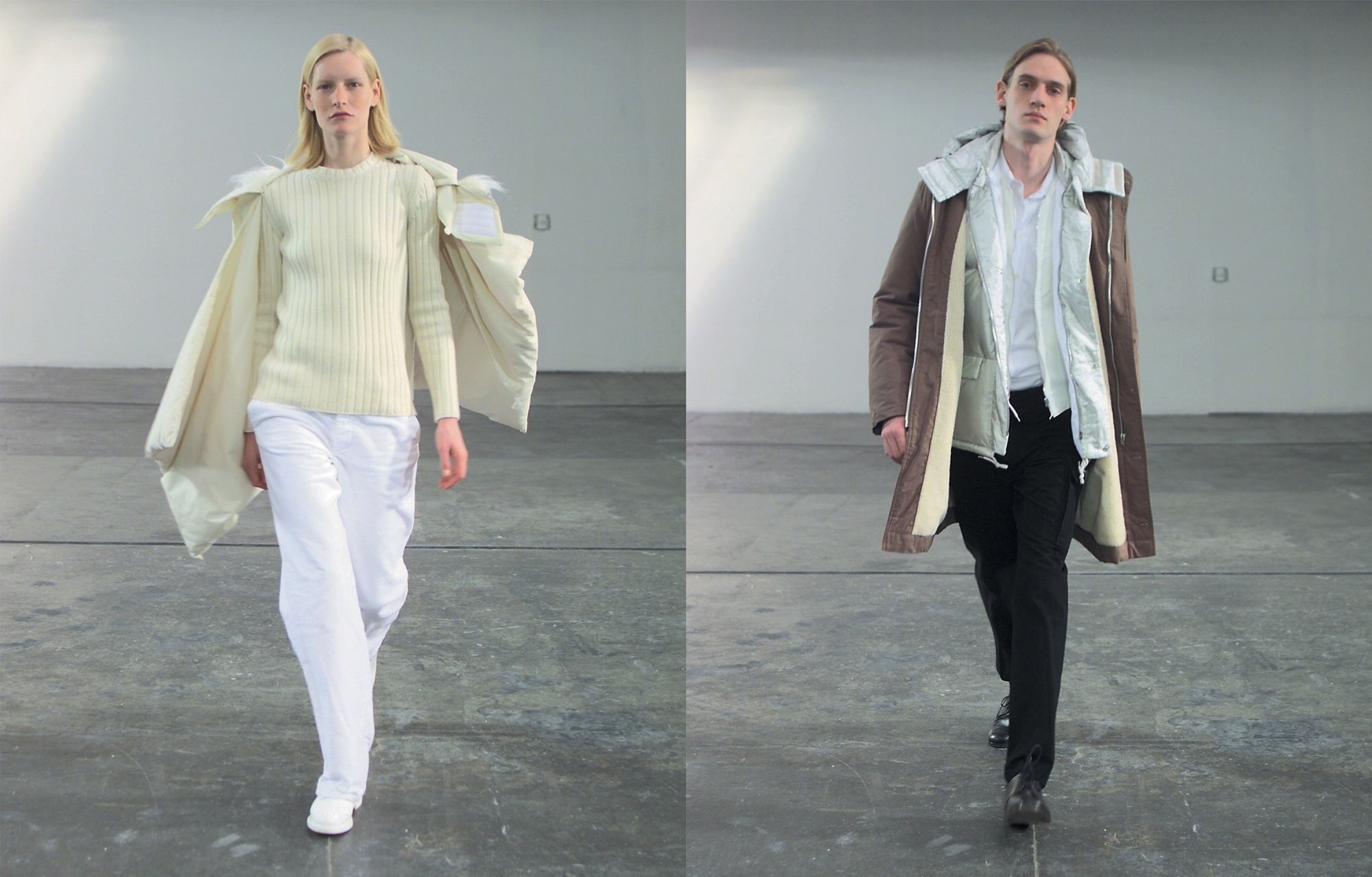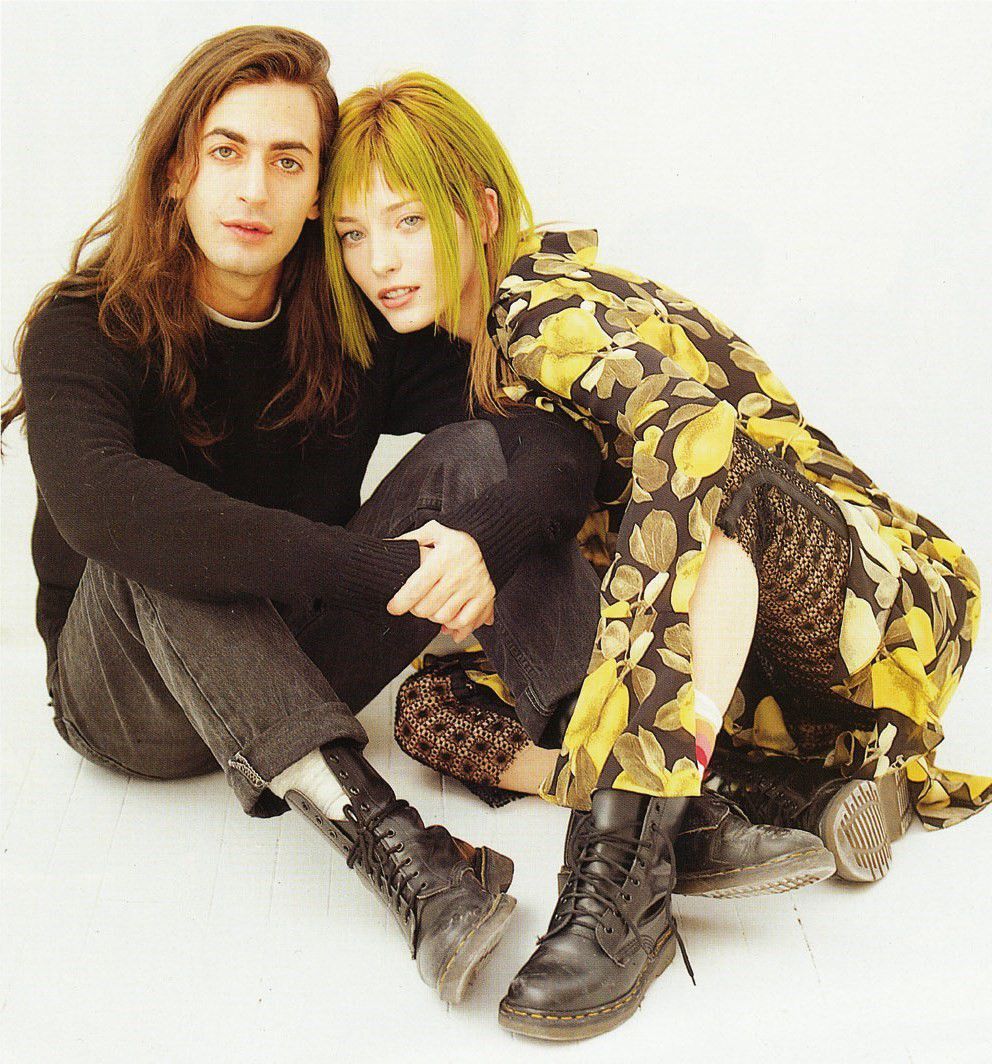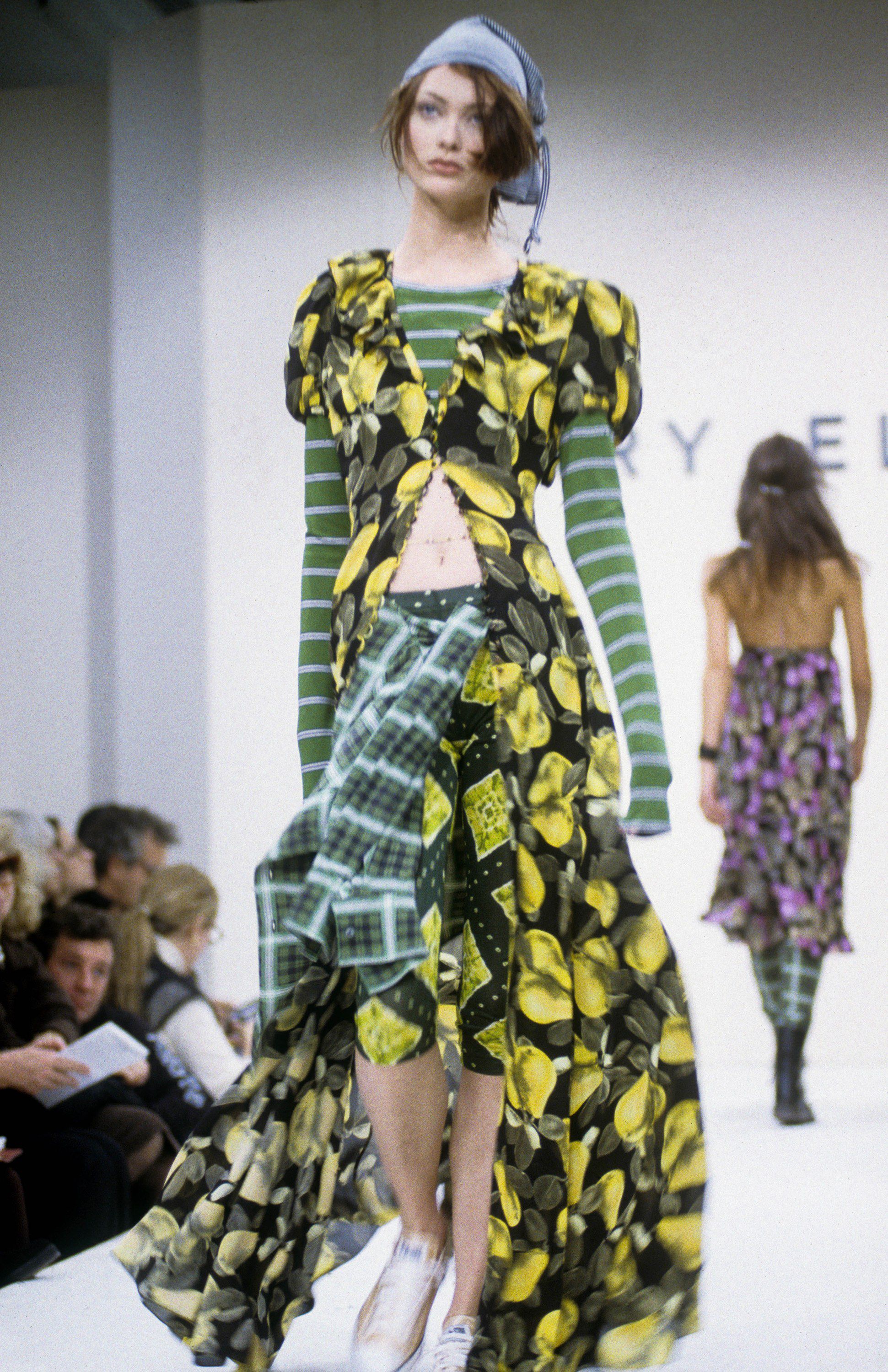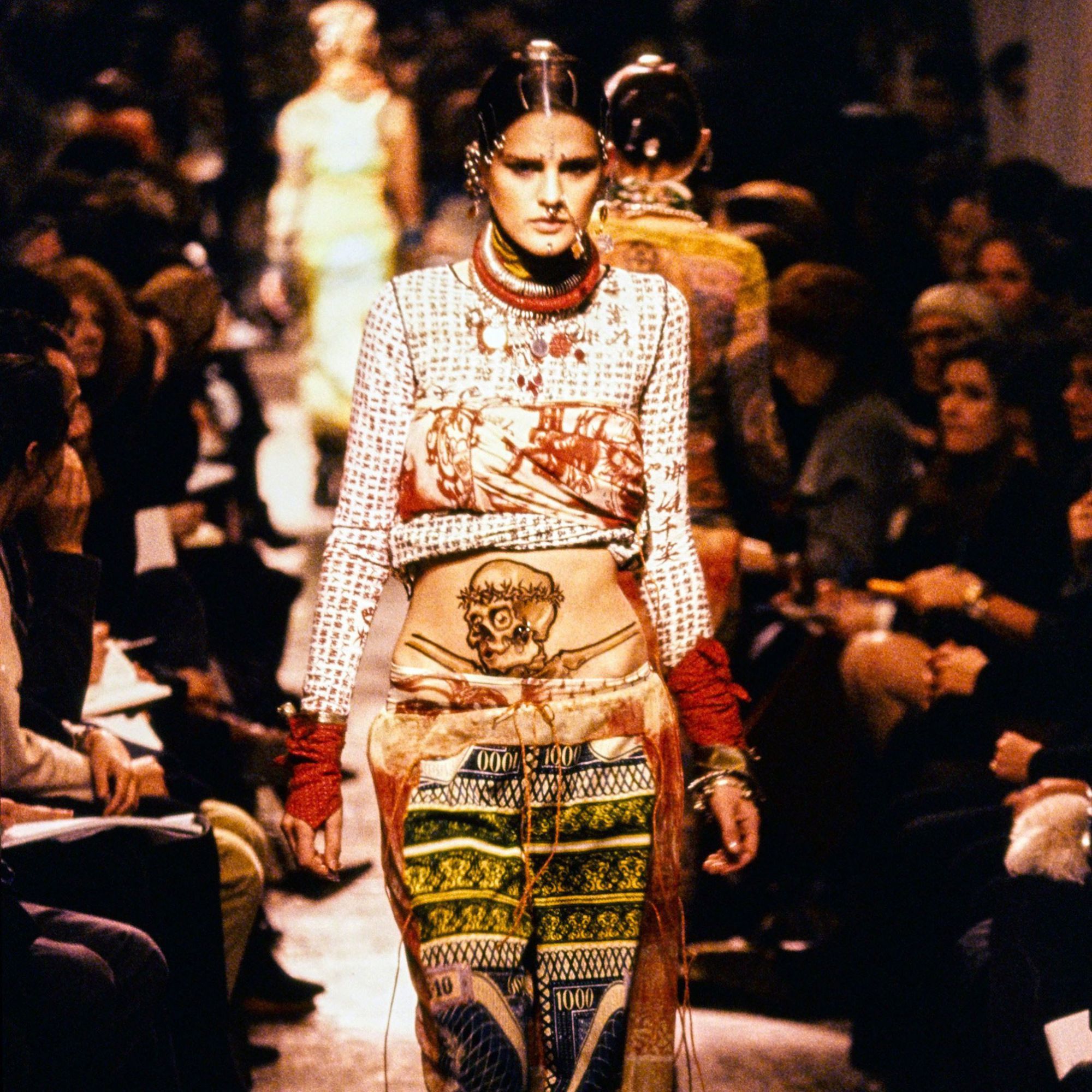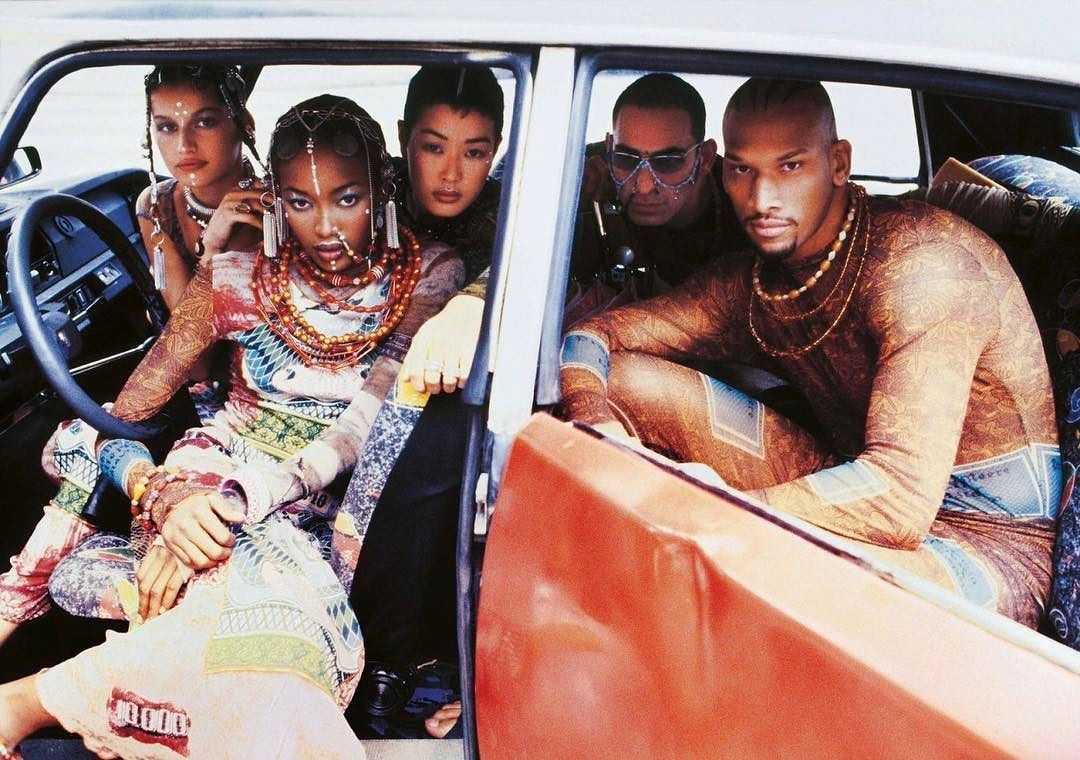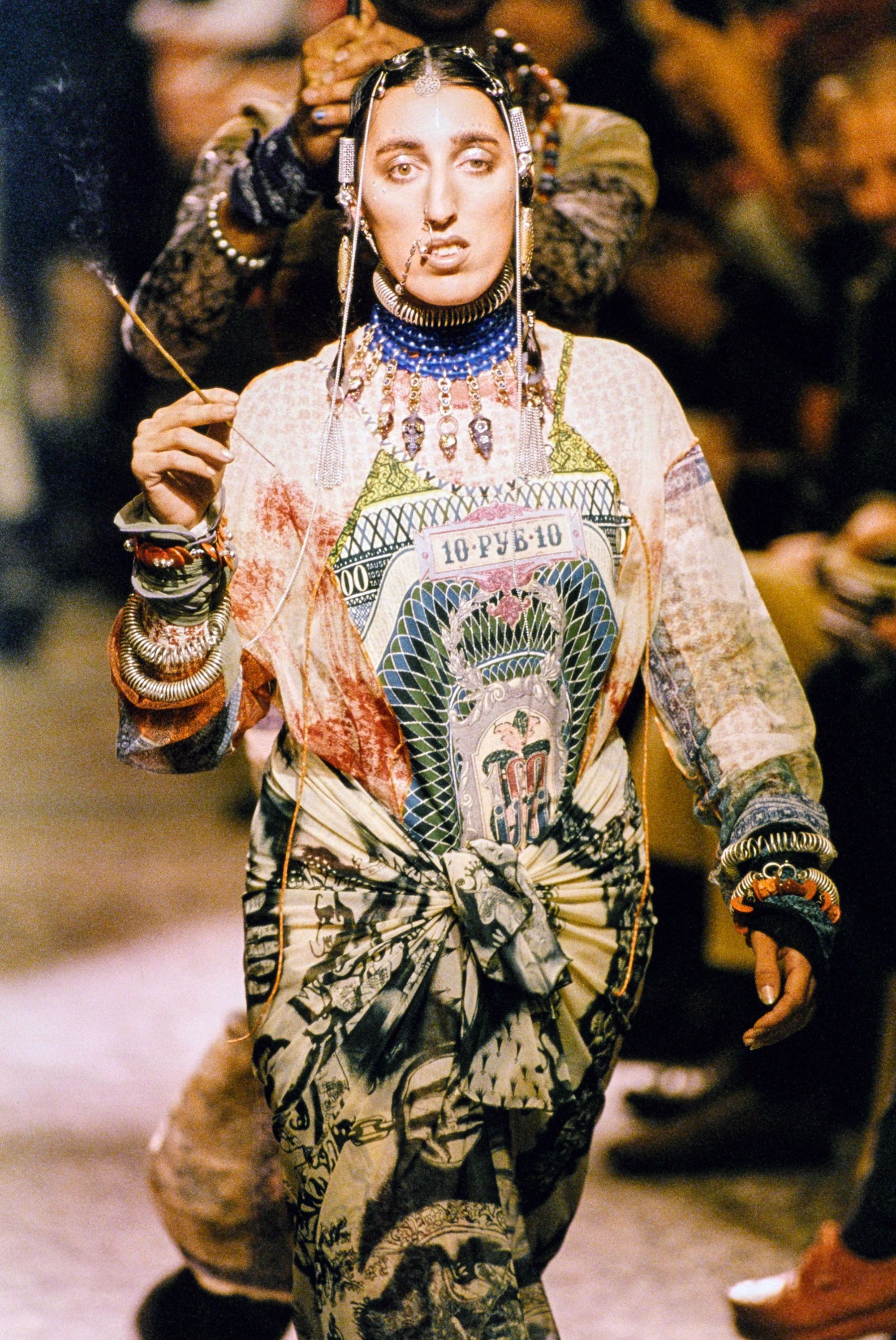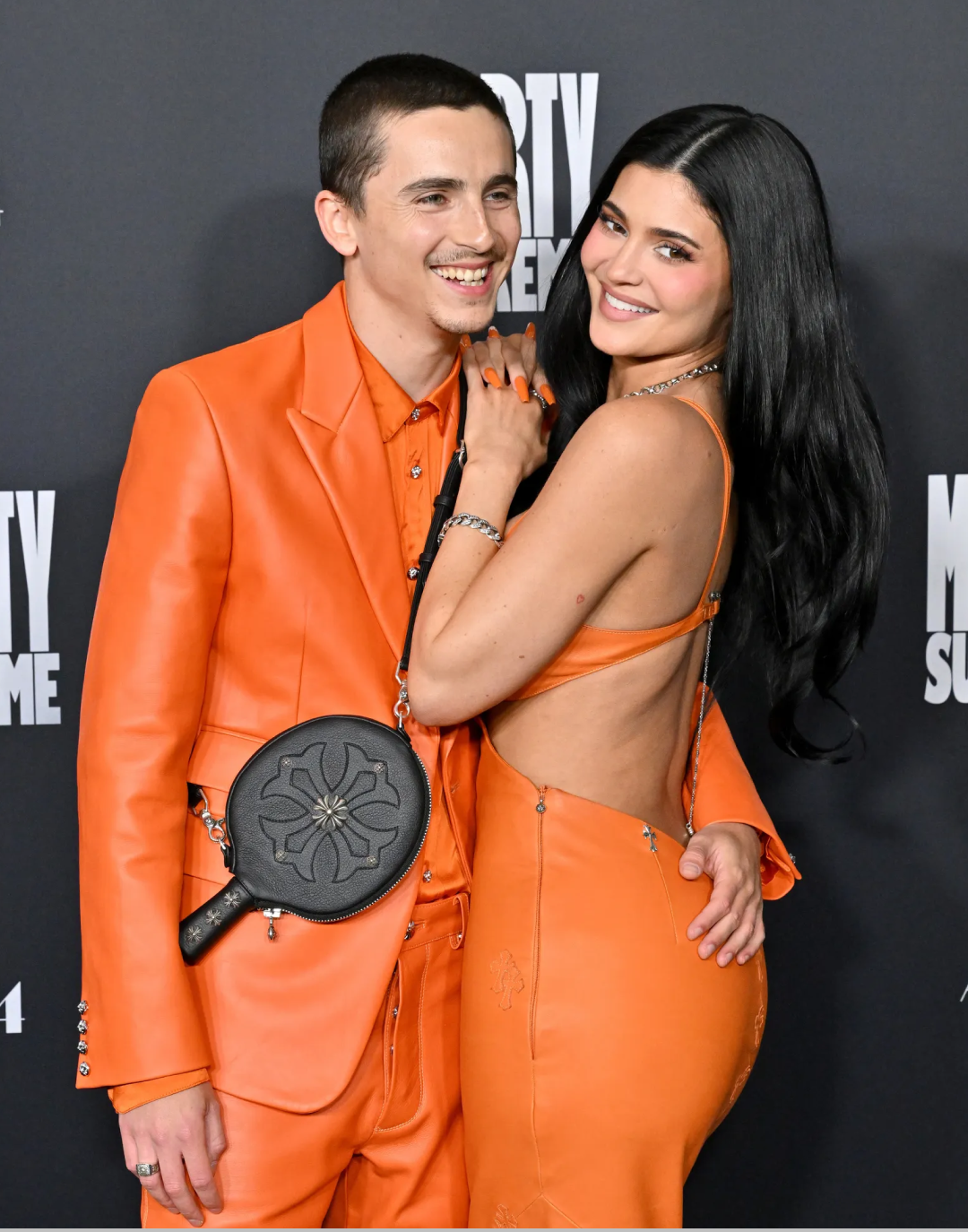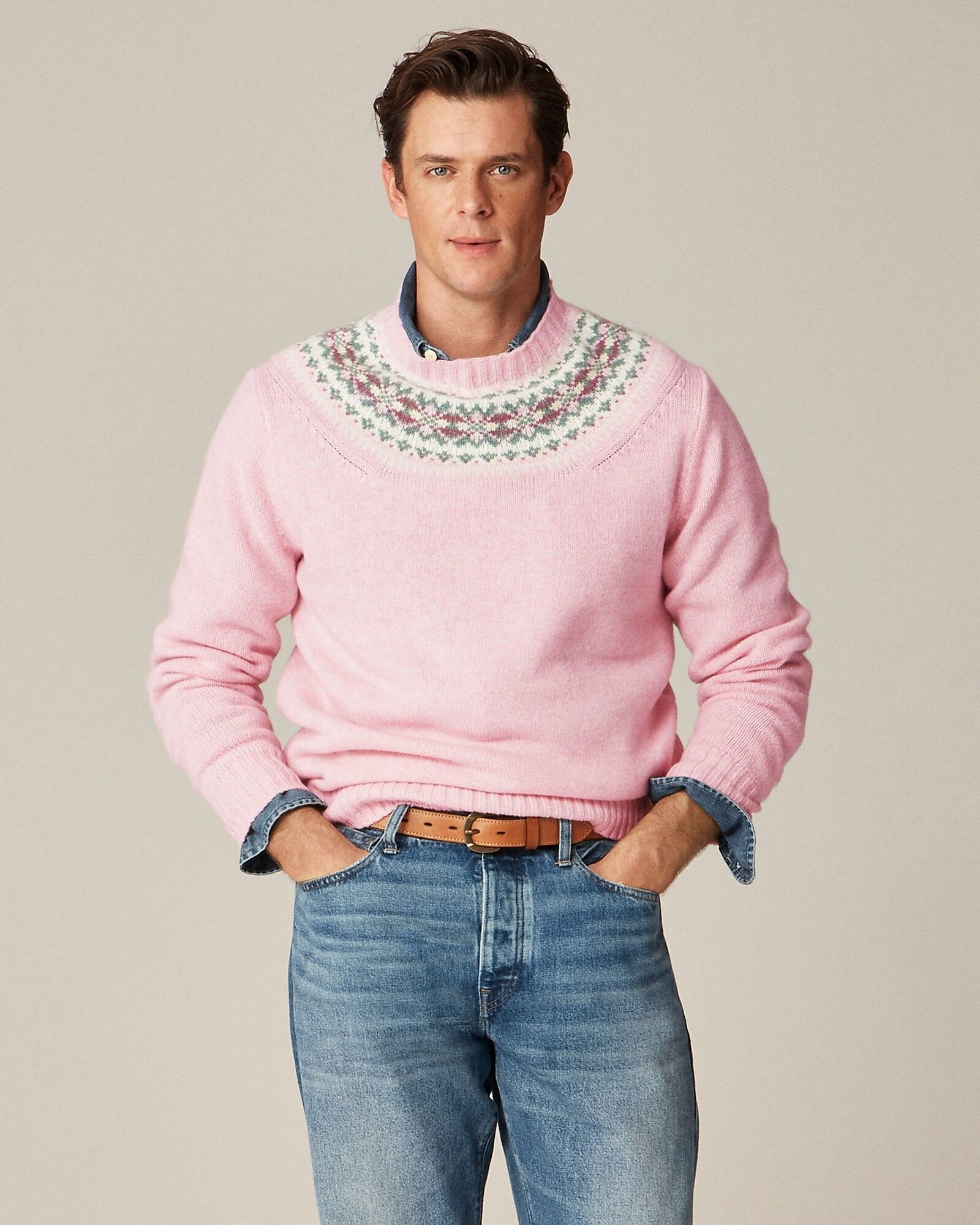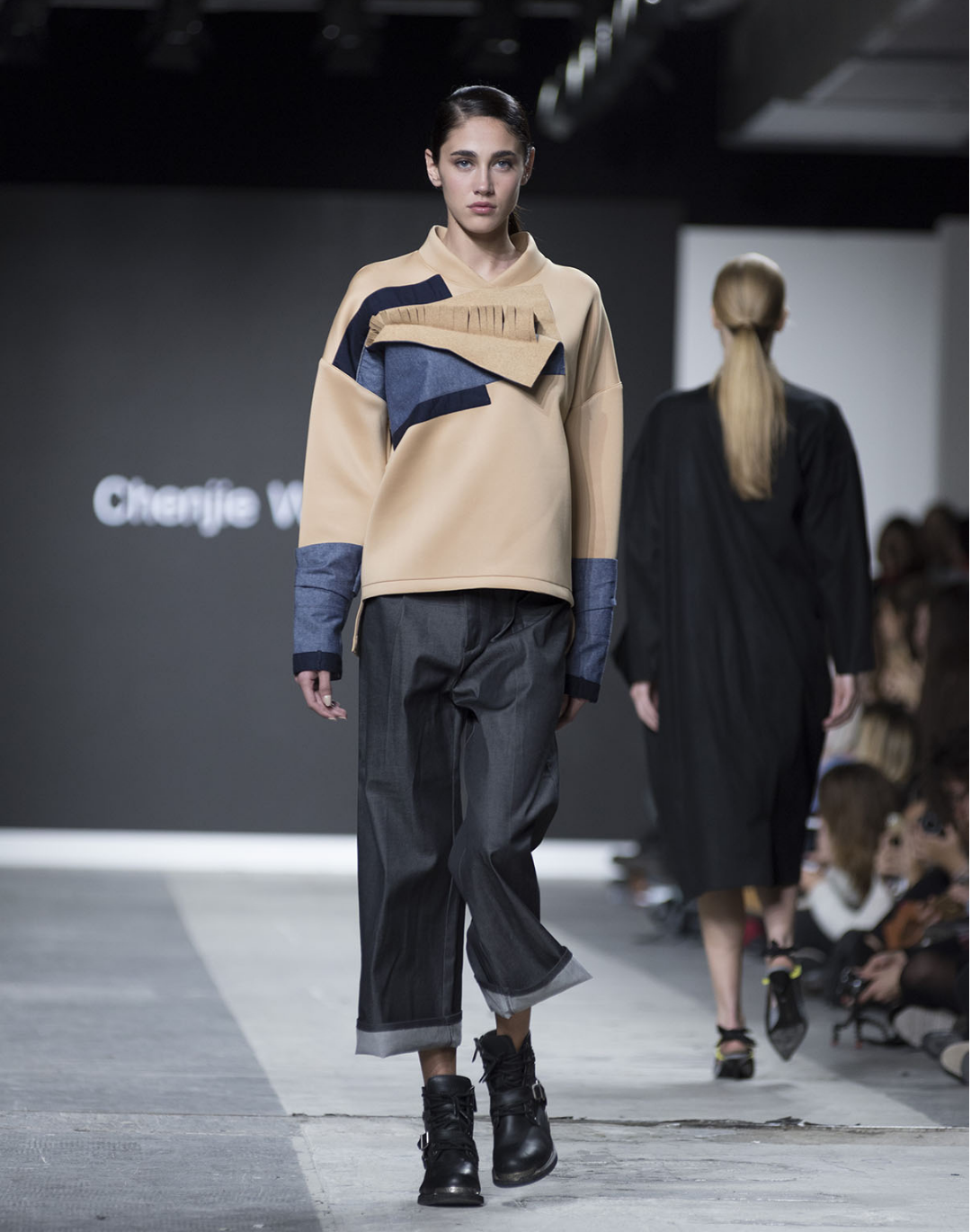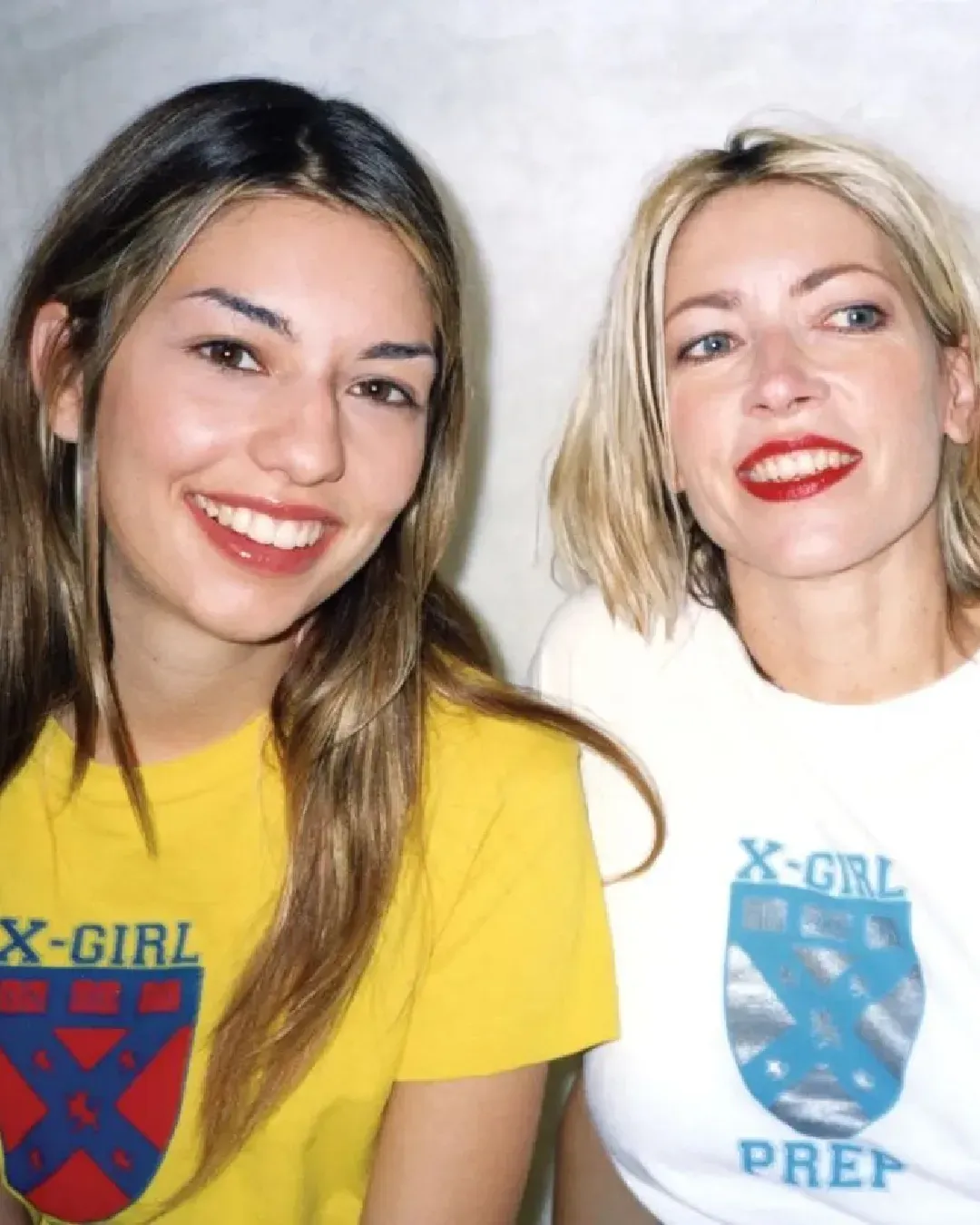
nss 90s: the decades most epic catwalks From the Versace FW91 collection to the painting robots of McQueen's SS99
Fashion and the 90s is a combination that has come back strong at the moment.
From Vetements to Eckhaus Latta, from Alexander Wang to Prada, every designer chooses to rework a trend or a detail of the era, presenting it in their own way, grunge, minimalism, deconstructivism, or glamour.
While the fashion weeks of Paris, London, New York and Milan give alternate proposals for the next SS19, nss takes you back twenty years to relive some of the most epic shows seen on a catwalk.
Chosen for their impact on fashion, for the show's spectacular decor, for the iconic nature of the creations or for deep influence that we see today in the various fashion weeks.
Versace FW91
If there had been Instagram at the time, the fashion show for Versace's FW91 would have divided the social media world.
On the catwalk Gianni's girls dance, act like a group of friends, breaking the classic formula according to which each model advances and then comes back alone.
Small changes that transformed what until then was a small event for press and buyers into a front page show, an event where musicians and movie stars meet and models become top models.
The finale with Linda Evangelista, Cindy Crawford, Naomi Campbell and Christy Turlington walking on the catwalk hand-in-hand lip sync singing Freedom by George Michael, recalling the video they starred in, was absolutely epic.
The famous Linda Evangelista's quote "I do not get out of bed for less than 10 thousand dollars" from now on becomes a reality, and the merit goes only to Gianni Versace and this show.
Perry Ellis SS93
Capturing the spirit of his time.
This is what Marc Jacobs did creating the 1993 spring/summer collection by Perry Ellis.
"With Kurt Cobain and Courtney Love in the newspapers and their music dominating both the radio waves and MTV, a 29-year-old Jacobs sent flannel shirts, printed granny dresses, Dr. Martens, and knitted skullcaps down the runway. [...] The collection became a badge of cool, representative of the culturally savvy collections Jacobs would later" recalls Nicole Phelps on vogue.com today.
Unfortunately, at the time nobody understood the lucid vision of the young American talent.
Critic Suzy Menkes sentences “Grunge is ghastly” and her colleague Cathy Horyn reiterates "Grunge is an anathema for fashion, rarely has slovenliness looked so self-conscious, or commanded so high a price.”
The consequence? Jacobs is fired.
Not so bad because, at the same time, thanks to its controversial aesthetic vision that embodies the style of Nirvana, Mudhoney and Pearl Jam, the designer's career is consecrated and those 72 looks make fashion history.
Jean Paul Gaultier SS94
Jean Paul Gaultier, the enfant terrible of fashion, is famous, as the fashion historian Richard Harrison Martin writes, for "His postmodern sensitivity to transform, abandoning the cognitive command of the past to an intuitive sensibility for the present".
This characteristic has allowed him to present some of the most unforgettable fashion shows of the 90s.
One is certainly the SS94, "Les Tatouages".
With this collection, Gaultier creates a collage of what he sees on the street, in a globalized city like Paris, a puzzle of elements that includes tribal, Indian and African notes, eastern mysticism, Joan of Arc and the wild spirit of punk.
On the catwalk walk Stella Tennant, Naomi Campbell, and the eccentric actress Rossy De Palma, men in sarong-style wraparound skirts, a plethora of trompe l'oeil prints, corsetry, armor, fake piercing, printed kilt, brocade style coats Louis XVI, denim with hip-hop volumes.
For Vogue it is "a surprising vision of intercultural harmony".
Chanel SS94
Chanel is known for its spectacular parades, with 265-ton icebergs imported from Scandinavia, space rockets, cruise ships or supermarkets, but in the 90s things are simpler and more direct.
The attitude-first approach is imperative.
Of course, beautiful models and amazing dresses help, as in the SS94 proposal.
Karl Lagerfeld encapsulates street style in his creations: Kate Moss, Helena Christensen, Carla Bruni and the other girls walk with hair extensions, bucket hats, oversized hair clips, micro bikinis, very short tweed dresses fitted with chains to wear, rapper, baggy pants with braces and even shoes with the iconic double "C" by Chanel on the side.
Calvin Klein SS94
There's no question that 1994 was an exciting year for fashion.
And for Calvin Klein.
His garments in which "nothing is stiff" reflect the designer's belief that, as he told Vogue, the 1990s "relate to the staff, to stay and be alone, and not to show off what you have on your back".
Its minimal creations, almost as thin as underwear, set a new standard of elegance and entered the collective iconography to such an extent that the sleep dress worn by Kate Moss during the show for the SS94 collection was displayed at MoMa. It has become part of the exhibition Items: Is Fashion Modern?, chosen, along with other unforgettable pieces, because it has contributed to shape the culture of fashion as we know it.
Gucci FW95
No frills, just clothes.
Sometimes these are enough to determine the success of a show and turn it into one of the most important of the decade.
Ask Tom Ford: with the FW95 collection designed for Gucci he has created the most profitable show of all time for the Tuscan brand.
Before the show only a few people were aware of the great talent and marketability of Ford, but the day after the show the request to buy a piece of the new line was so big that the showroom was packed with clients.
An absolute hysteria that inaugurates a new and ultra-glam era of Gucci, as well as a boosting in sales by 90% between 1995 and 1996.
The collection, presented in Milan, has a sexy touch never seen before, that conquers even the stars. For the MTV Video Music Awards of that year, in fact, Madonna chooses the look worn on the catwalk by Kate Moss, one of the key outfits of the FW95, composed of beryl silk blouse and black low-waisted trousers.
Maison Martin Margiela FW95
Kanye West often wears them.
Givenchy has made it an art with a strong visual impact.
The masks that completely obscure the faces of the models are, however, one of the many gifts, along with an obsession with deconstruction and the Tibi boots, that Martin Margiela has made to the fashion world.
This accessory captures the attention during the fashion show for the FW95 collection, held inside a circus tent at the Bois de Boulogne in Paris.
Here, one after the other, the models parade with their faces covered with a veil of dark muslin, removed at the final exit and replaced by much more cheerful fuchsia balloons held in hand.
Comme des Garçons SS97
In the '90s most of the designers are engaged in moving as far as possible from the visual language of the previous decade.
In the case of Rei Kawakubo, denying a certain conception of the woman as a cultural trophy and going beyond the limits imposed by the body, are central in her aesthetic.
A perfect example is Body Meets Dress, Dress Meets Body, the SS97 collection also known as Lumps and Bumps, in which the Japanese designer stages a parody of modern ideals of beauty.
Here the study of volumes is explained with the insertion of soft prostheses, which give life to unprecedented, deformed shapes.
Helmut Lang FW98
Helmut Lang did it twenty years ago.
Before anyone else.
Before it became an habit.
He presented his FW98 collection online.
The show, prepared in less than a week, was recorded in a raw space with cement pavement, broadcasted on HelmutLangNY.com and, later, handed to the press on CD-ROM.
With this choice Lang embraced the future and inspired the next generation of designers to do the same, as he recalled later.
"At that time I felt that Internet was going to be huge, so I thought it was the right moment to swim against the tide and present the collection online" - he recounted. "It was a shock for the fashion world, but it was the beginning of a new normality. In a wider perspective, we made in the same season the entire collection available on a public platform, allowing for the first time the consumers to get an unfiltered insight of my work."
The collection? 81 looks, sweaters, trousers, parka and jackets in beige, cream, white, lemon, grey, and black nunaces.
Hussein Chalayan SS98
Only a few shows have been as emotionally powerful as Between, which brought the audience to tears.
Still relevant to this day, in his 1997 provocative show Hussein Chalayan explores the women's role in Islamic society.
The final moment of the show is unforgettable: a group of models is wearing niqabs of different lenghts. The first touches the ground and the others become shorter and shorter, finally revealing the naked body.
Edges had never been so important or powerful.
Conceptual. Experimental. Innovative.
Christian Dior Spring 1998 Haute Couture
The Marquise Luisa Casati, patron of the arts and muse, living at the beginning of the century, was one of the female characters that influenced fashion the most.
Almost every designer was inspired by her, but John Galliano brought it to another level: the eccentric noble woman is a costant element in his aesthetic.
His greatest homage to Casati was the 1998 Haute Couture Spring Show for Christian Dior.
Inside the Opéra Garnier of Paris, Galliano recreates a 20th century's art noveau ballroom, popoulated by mysterious and fascinating creatures wearing lavish dresses, mink coats, spanx and lace skirts, rose embroidery, tulle and everything that recalls Decadence.
An excess of beauty.
According to Tim Blanks, critic and journalist, "This is the exact definition of what a fashion show is".
Alexander McQueen SS99
Alexander McQueen had an enormous talent, able to create, like anyone else, a series of iconic collections.
From Nichilism in October 1993, with the introduction of the bumster pants with a super low waist, worn with transparent tees with fake blood on them, to Highland Rape in 1995 where he deals with the historical issue of England's oppression on Scotland, every McQueen's creation leaves a mark.
The 1999 spring show goes beyond, and becomes real performative art.
Entitled No. 13 because it's the 13th show of the designer, it remains the greatest homage McQueen paid to the Arts and Crafts movement: natural nuances and materials, like balsa and raffia, are used for intricated corsets, raw-edged skirts, leather and lace are featured in asymettrical pieces inspired by the labs of Queen Mary's Hospital in Roehampton (the first place to use prothesis for wounded soldiers of World War One).
A vivid memory in fashion culture is the moment when Shalom Harlow walks on the catwalk wearing a strapless eyelet dress, with a leather belt around the waist, and starts spinning on a round platform while some robots, usually used to paint cars, start spray color.
A perfectly choreographed dance, inspired by one of Rebecca Horu installations.










































